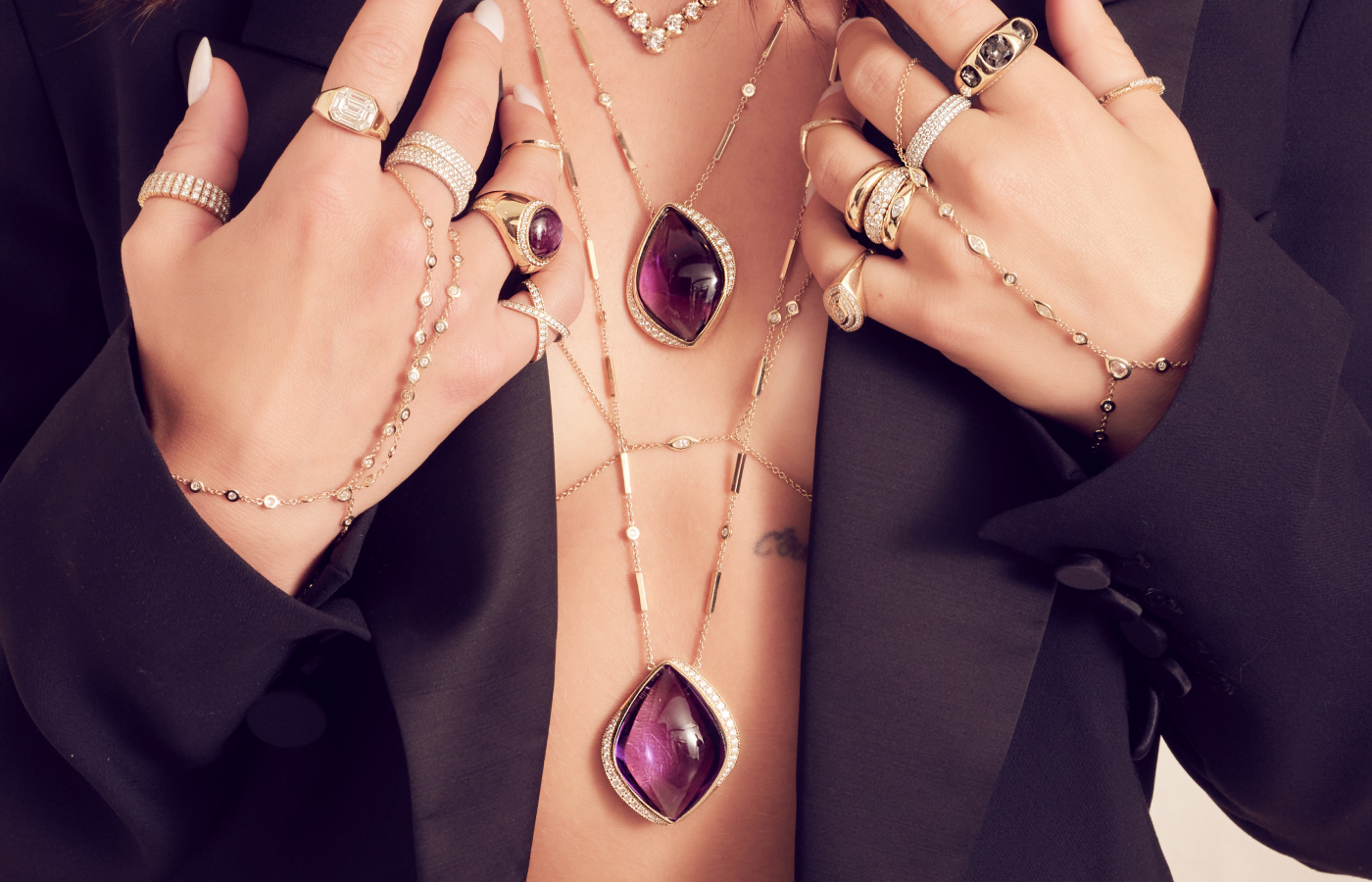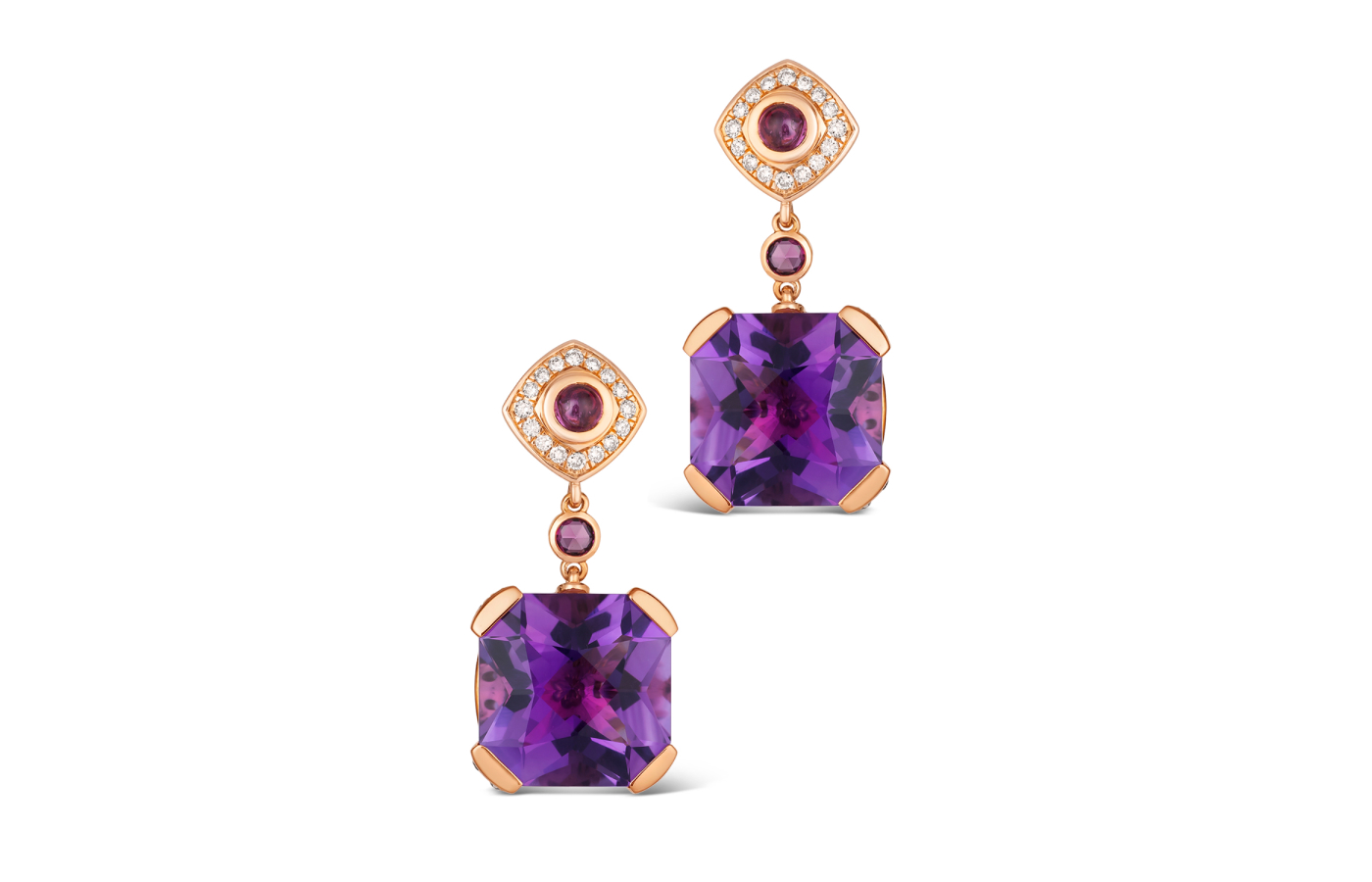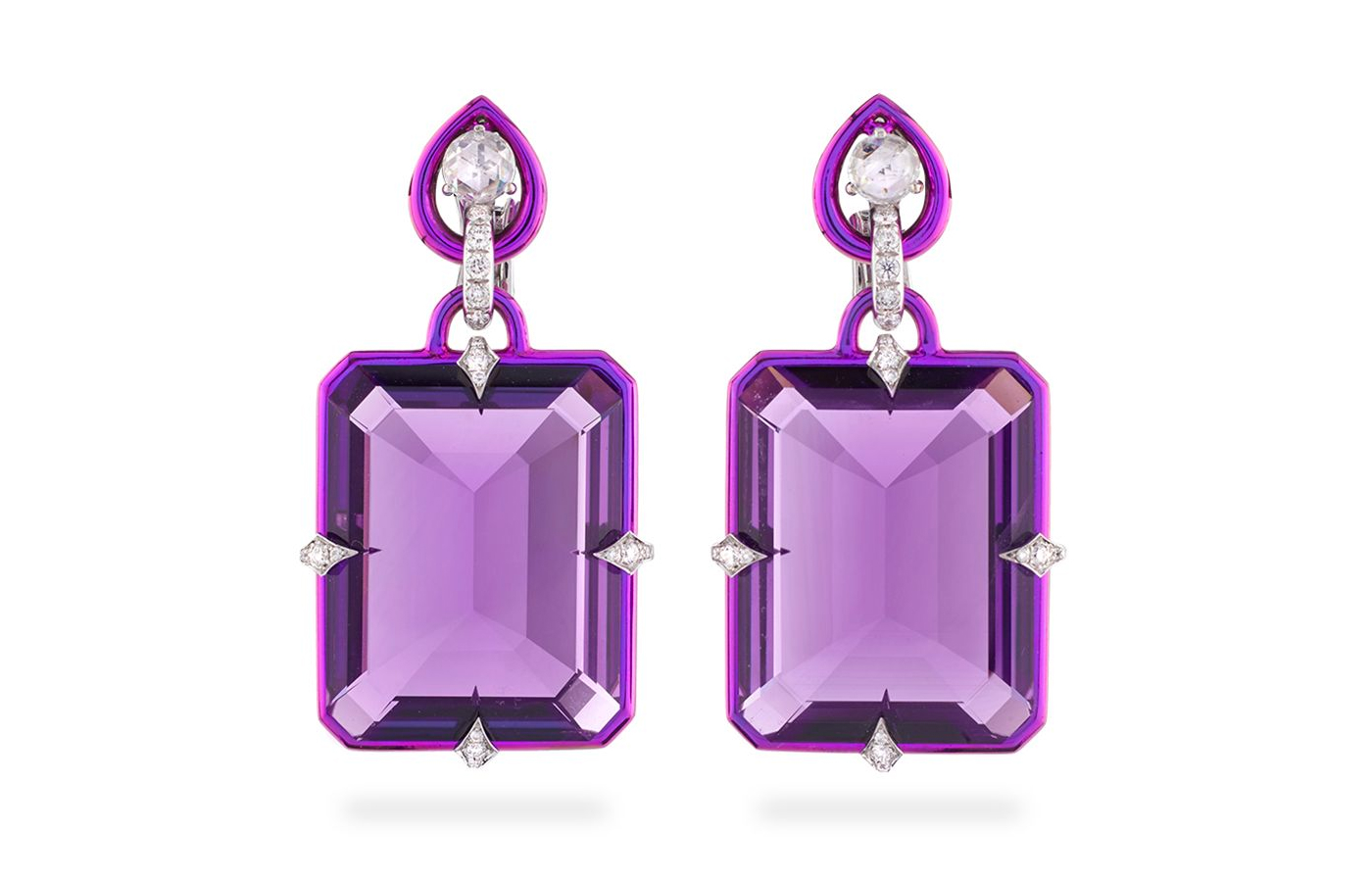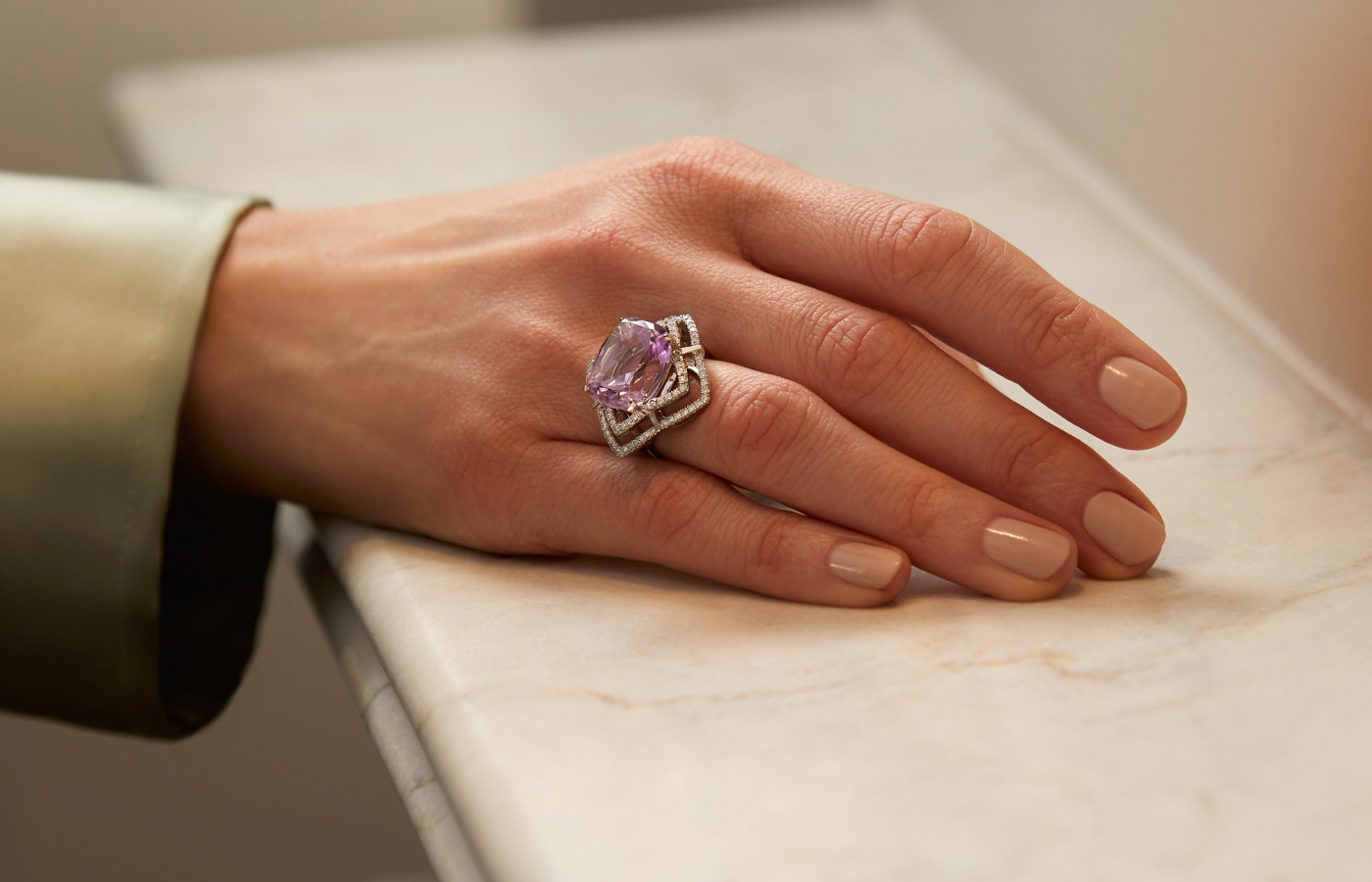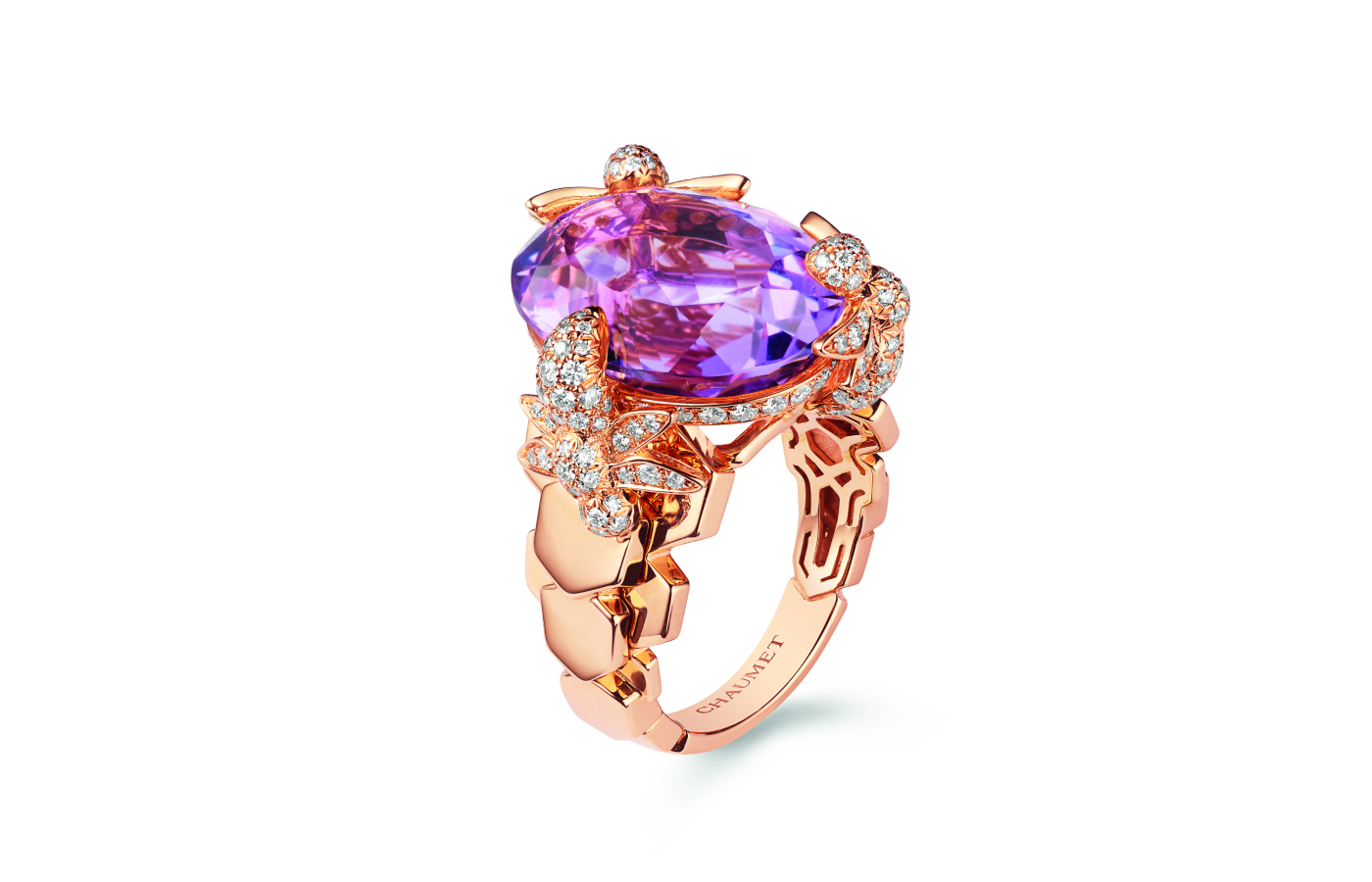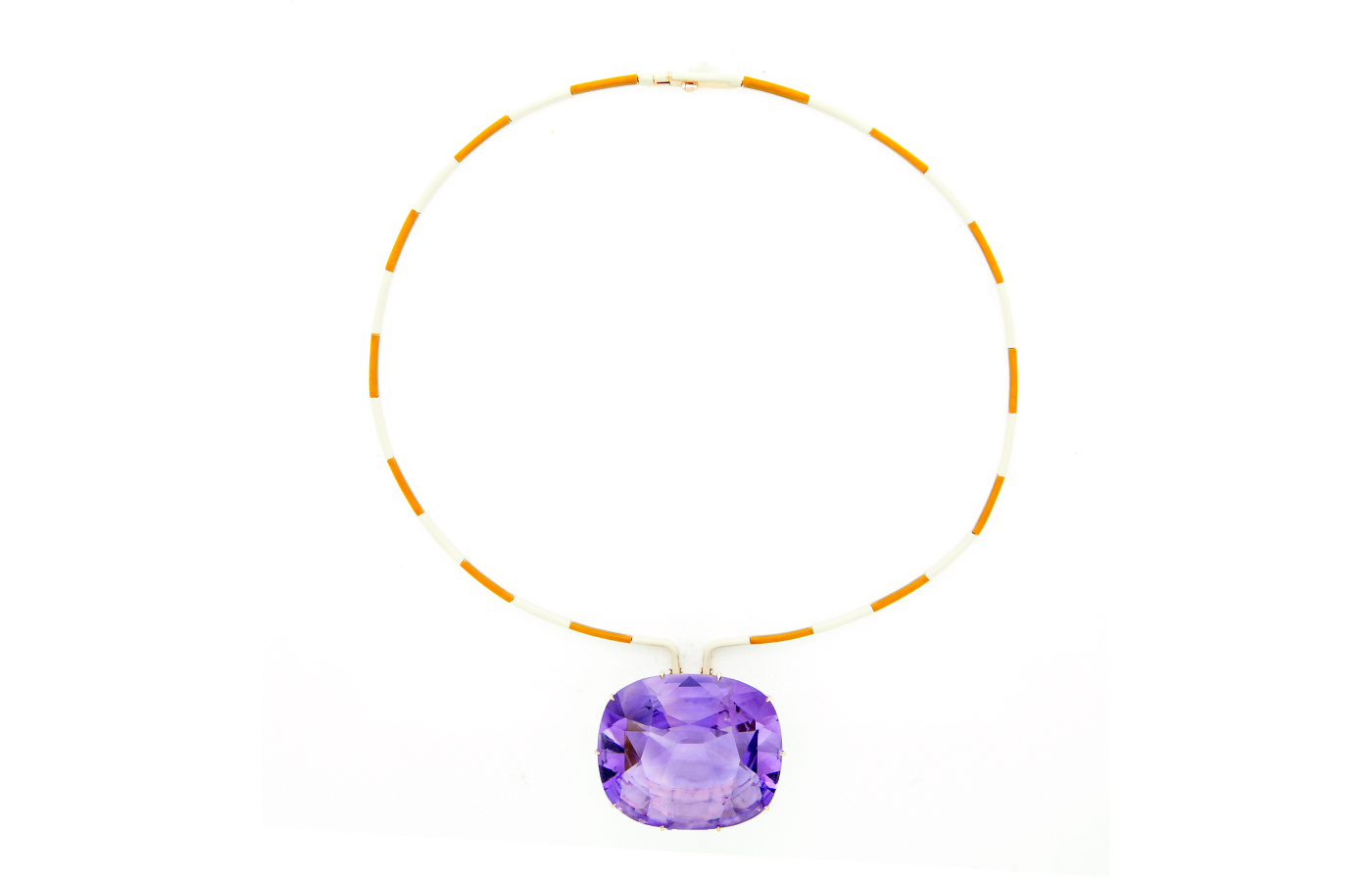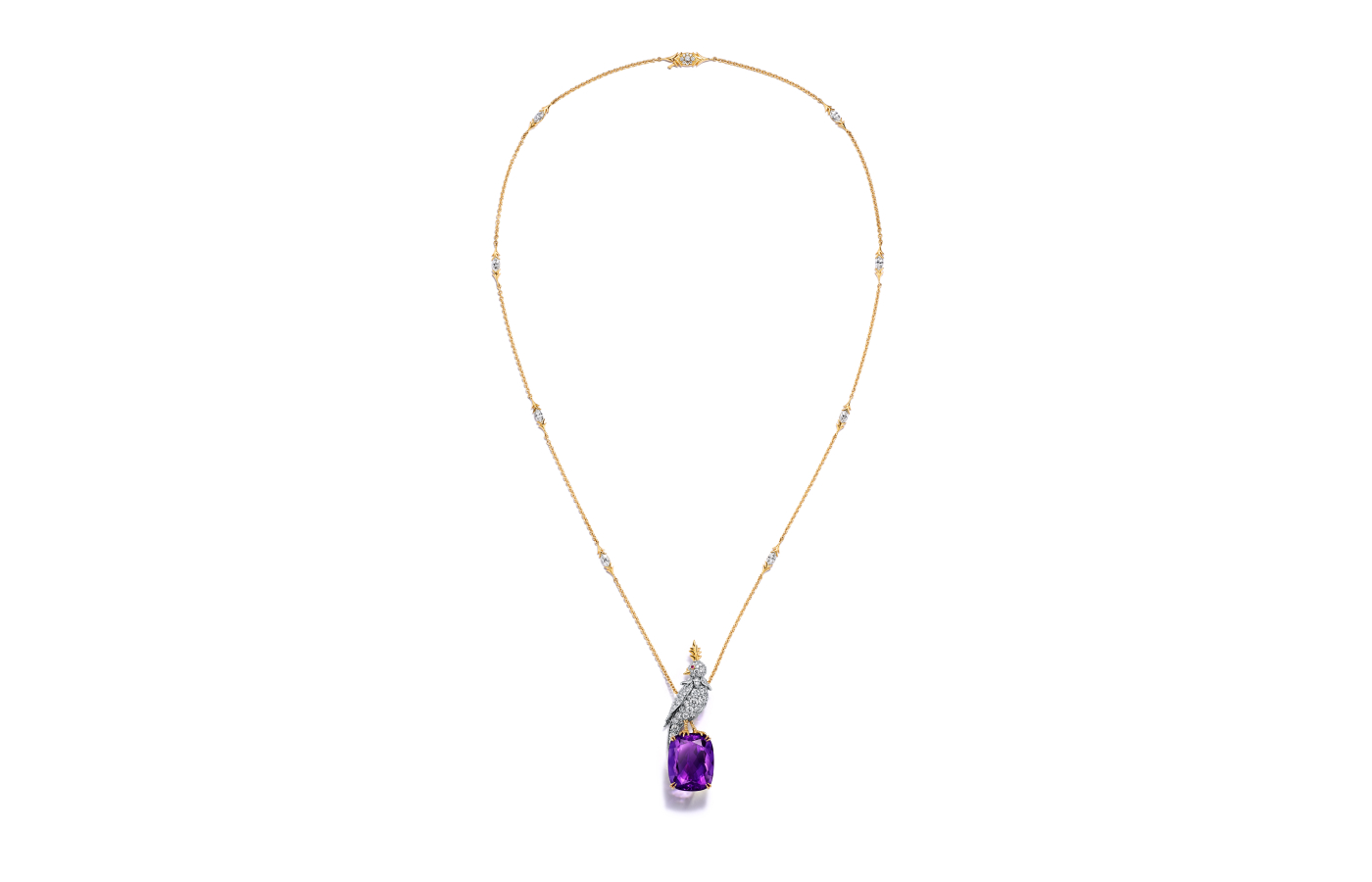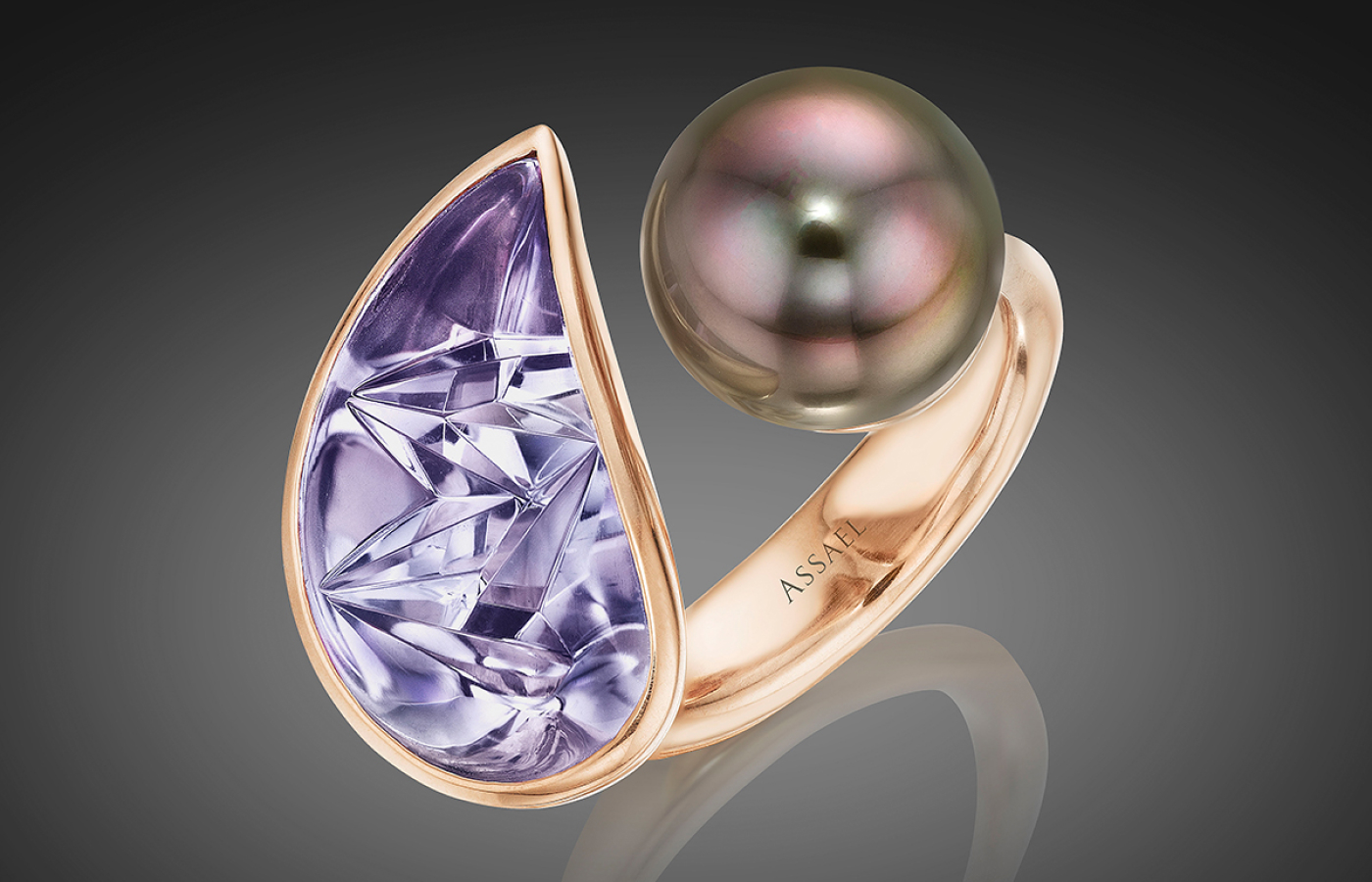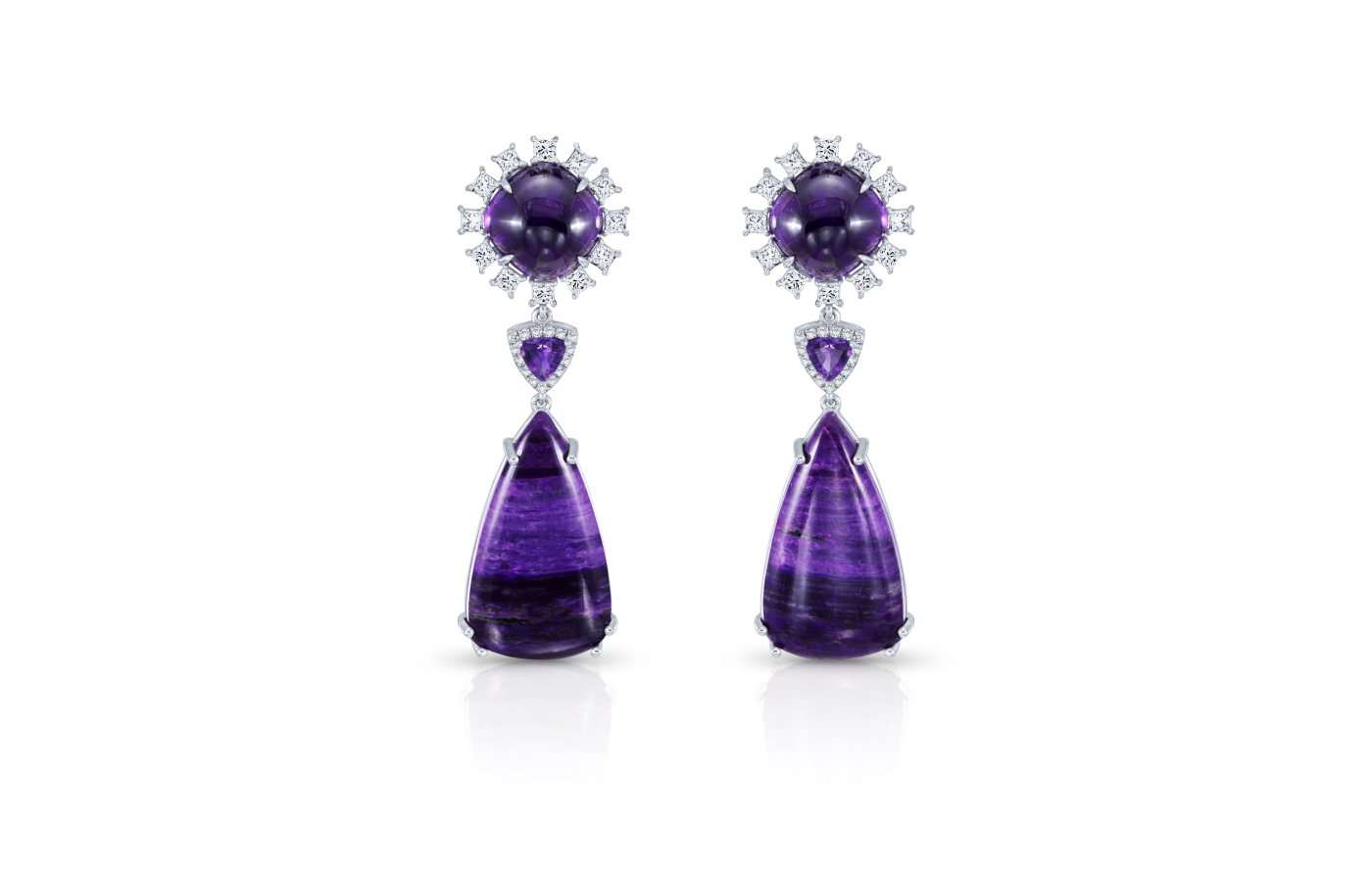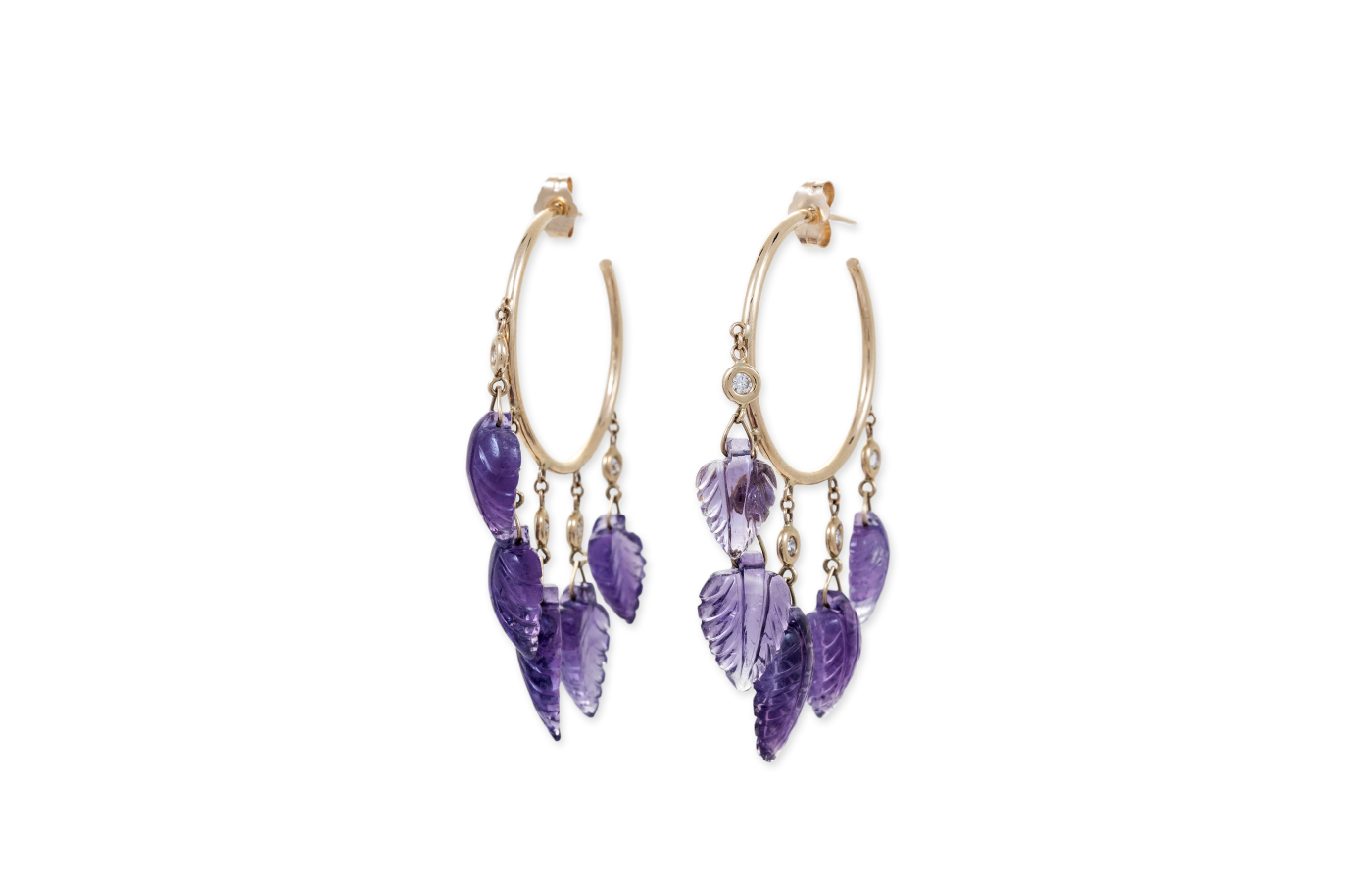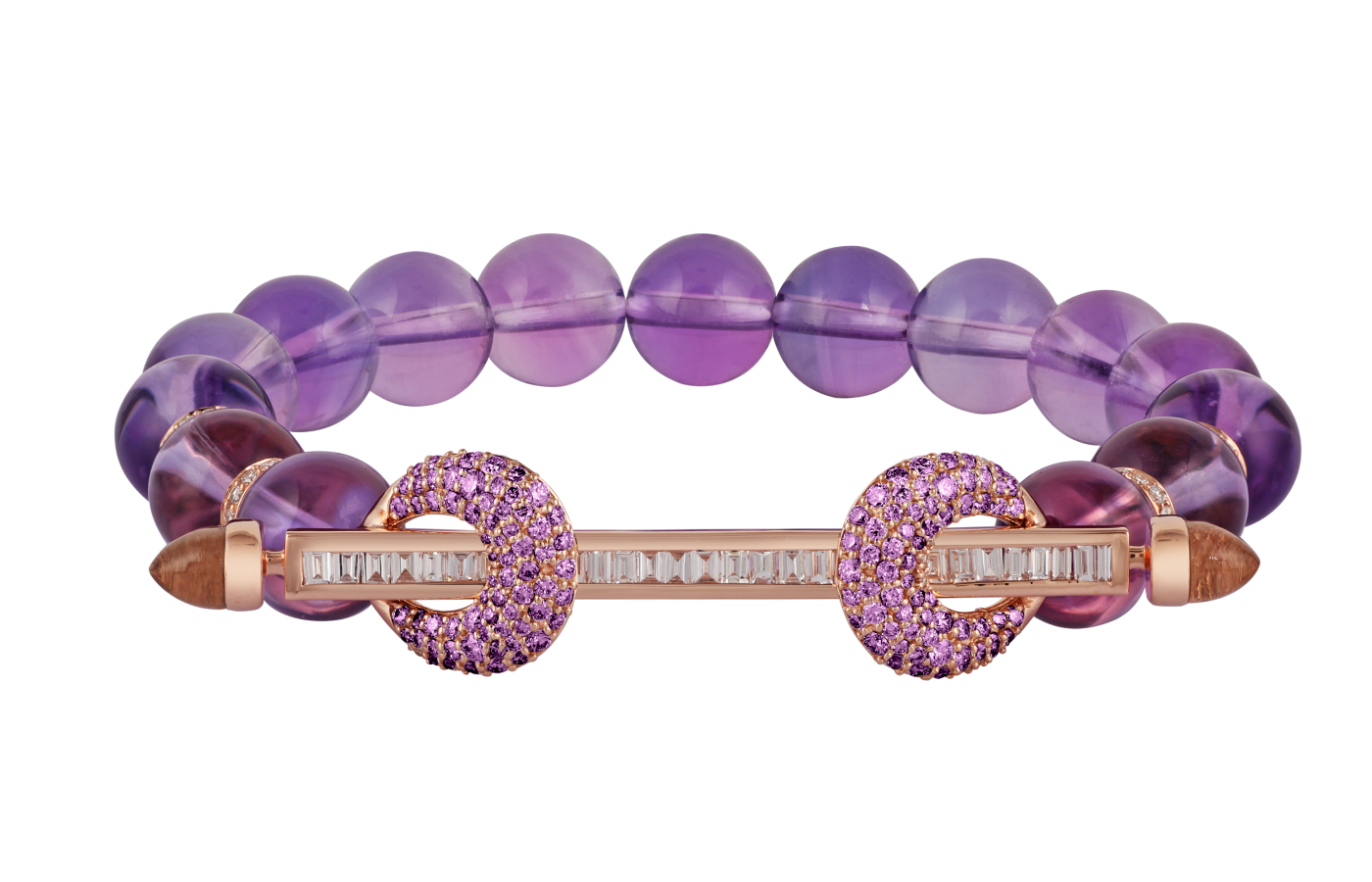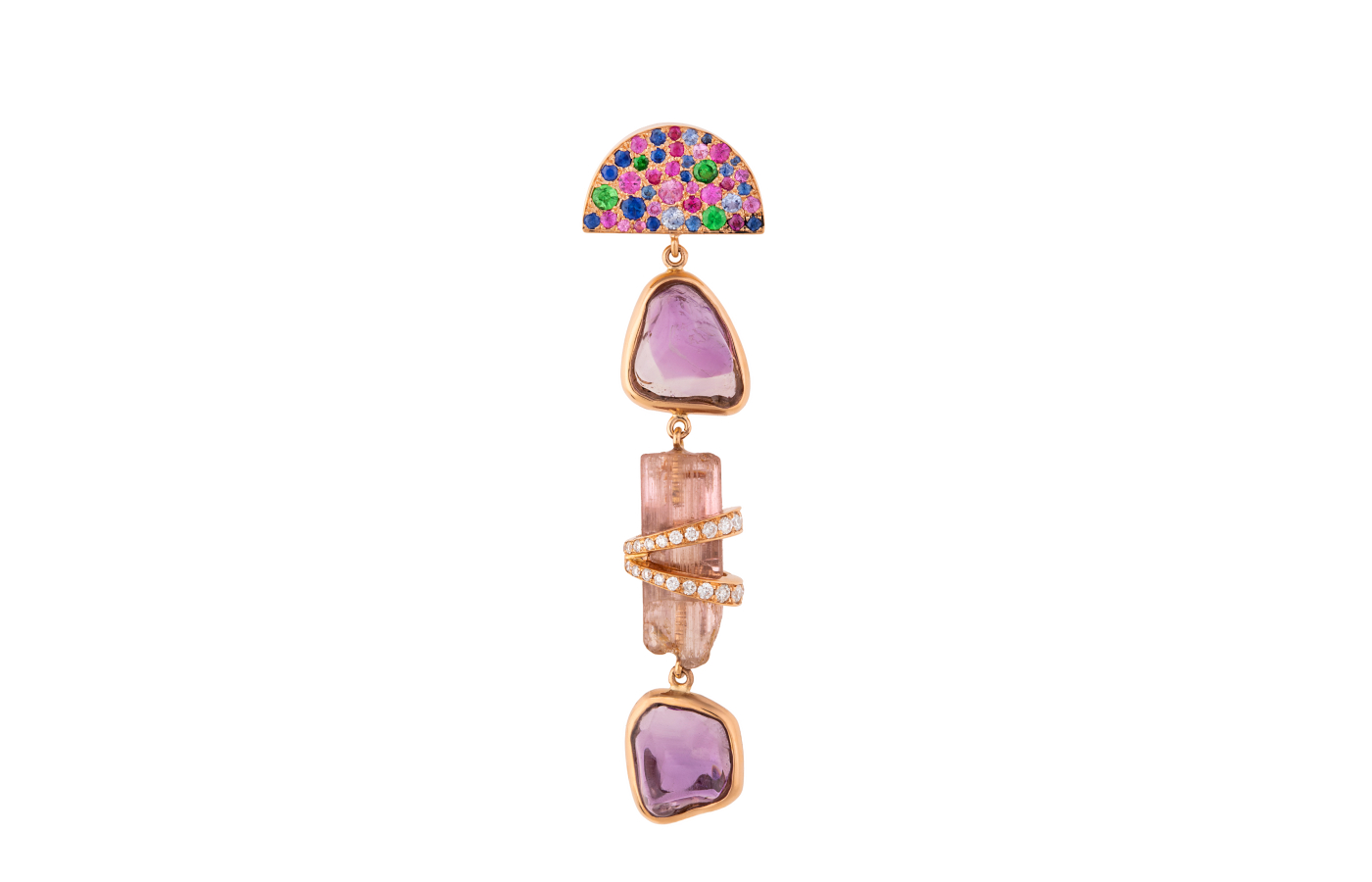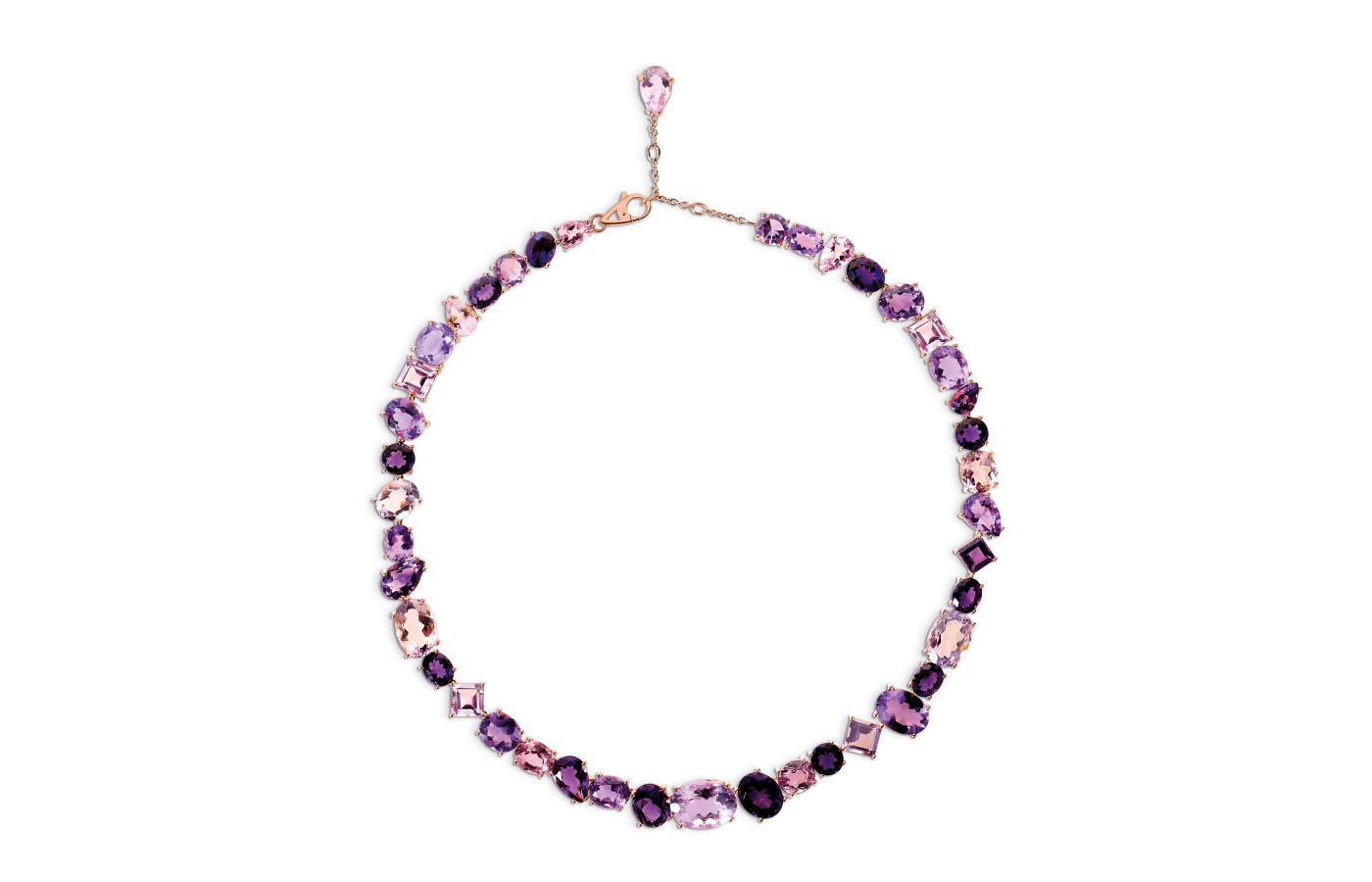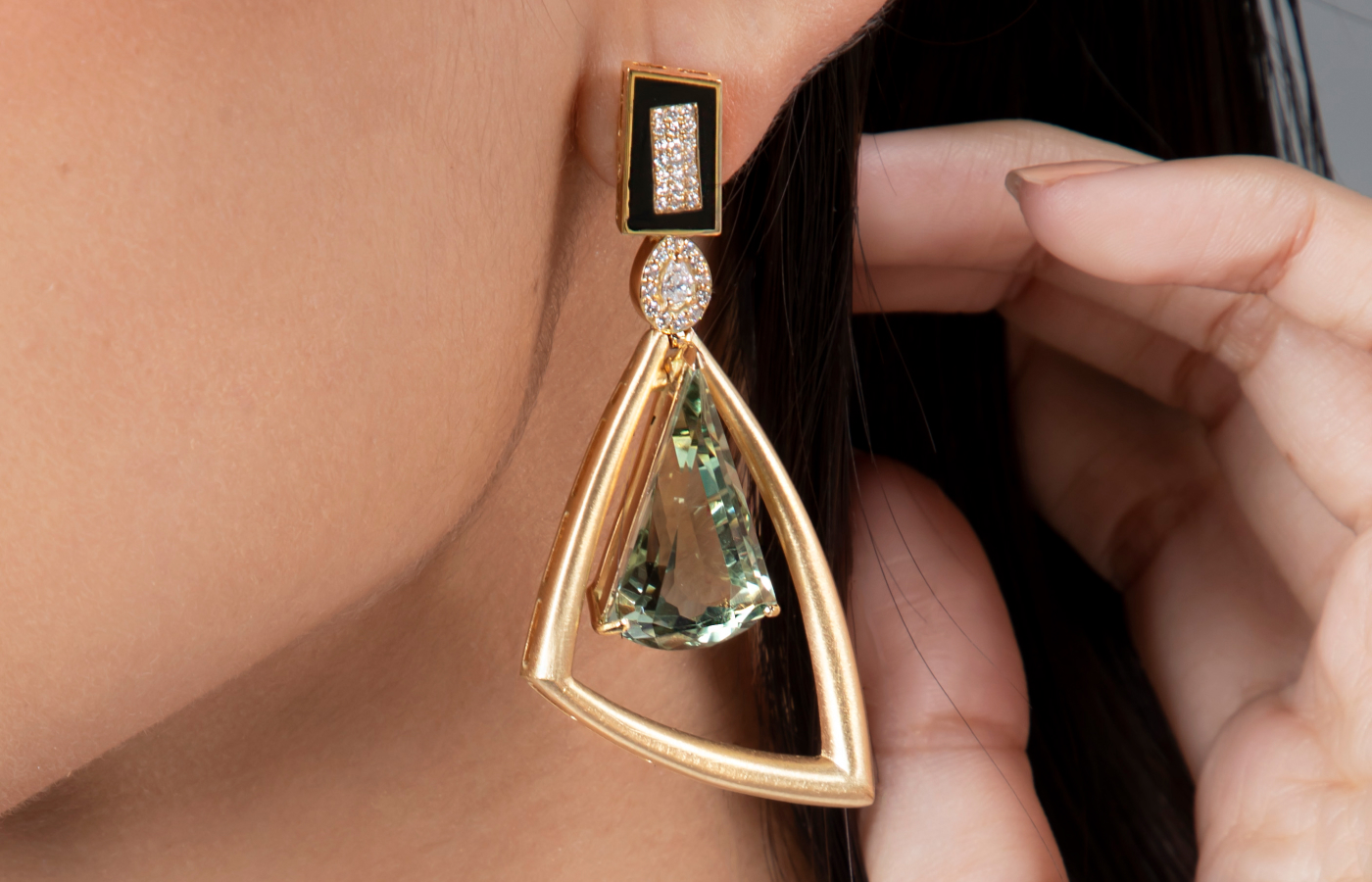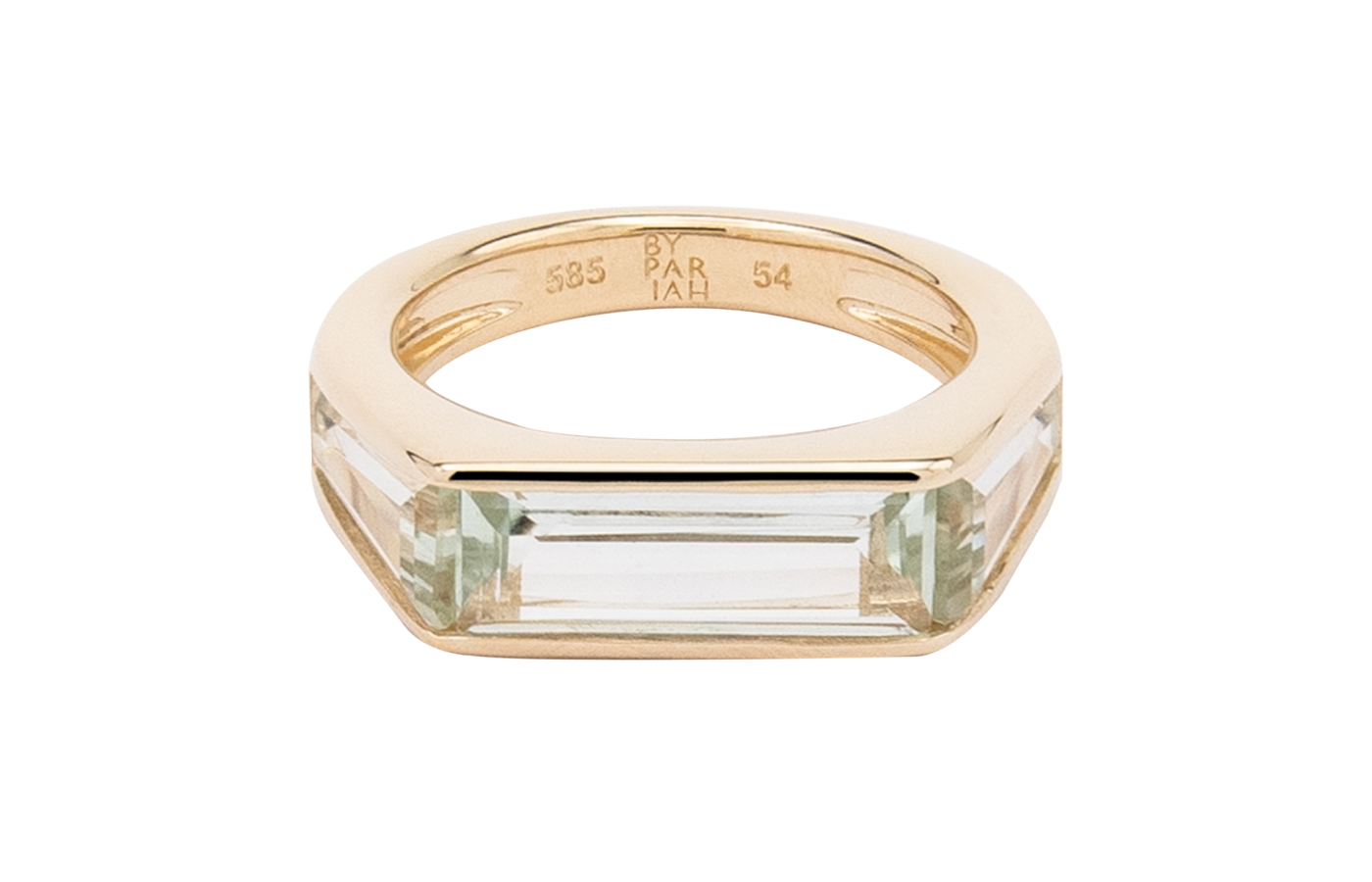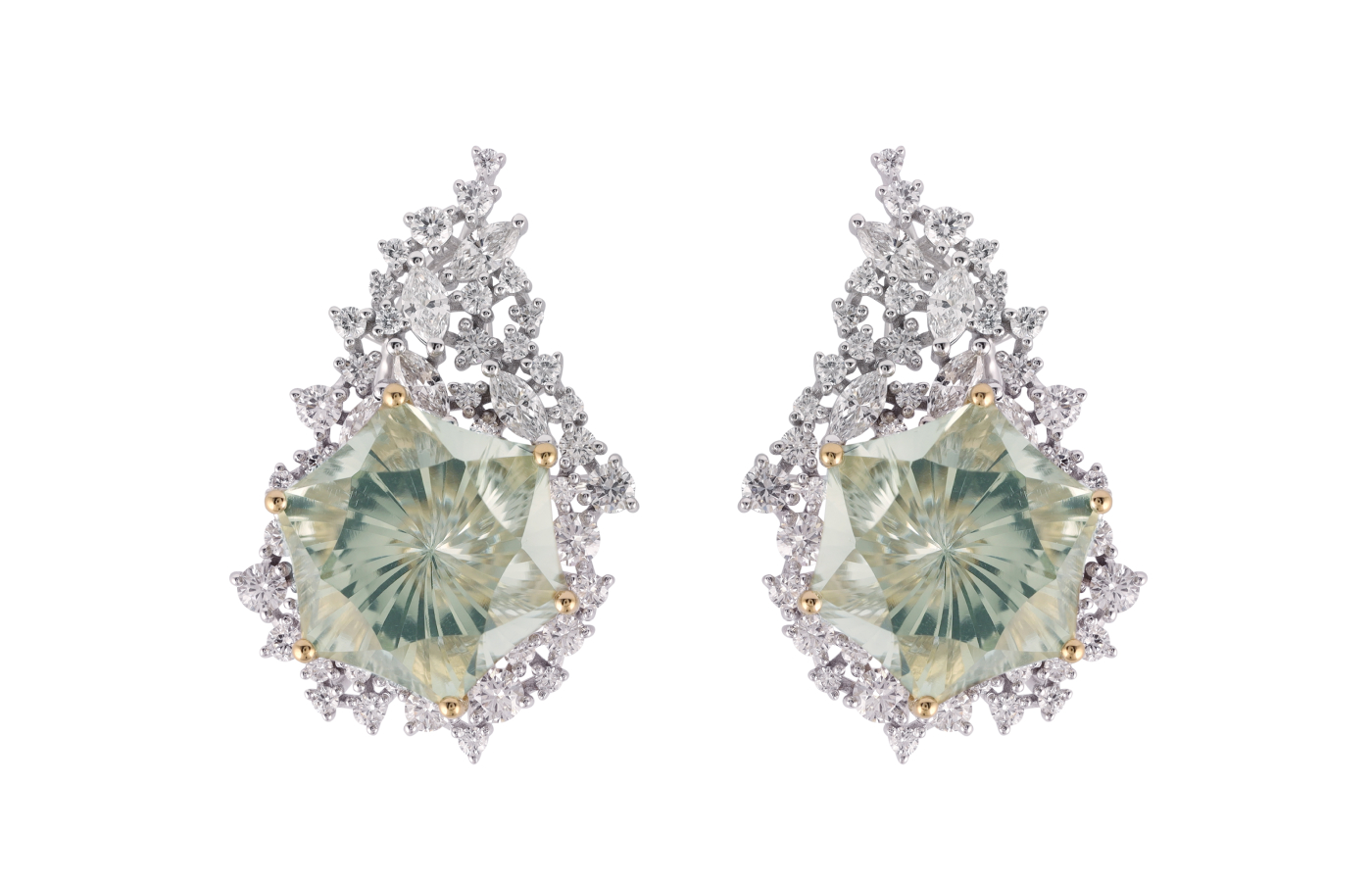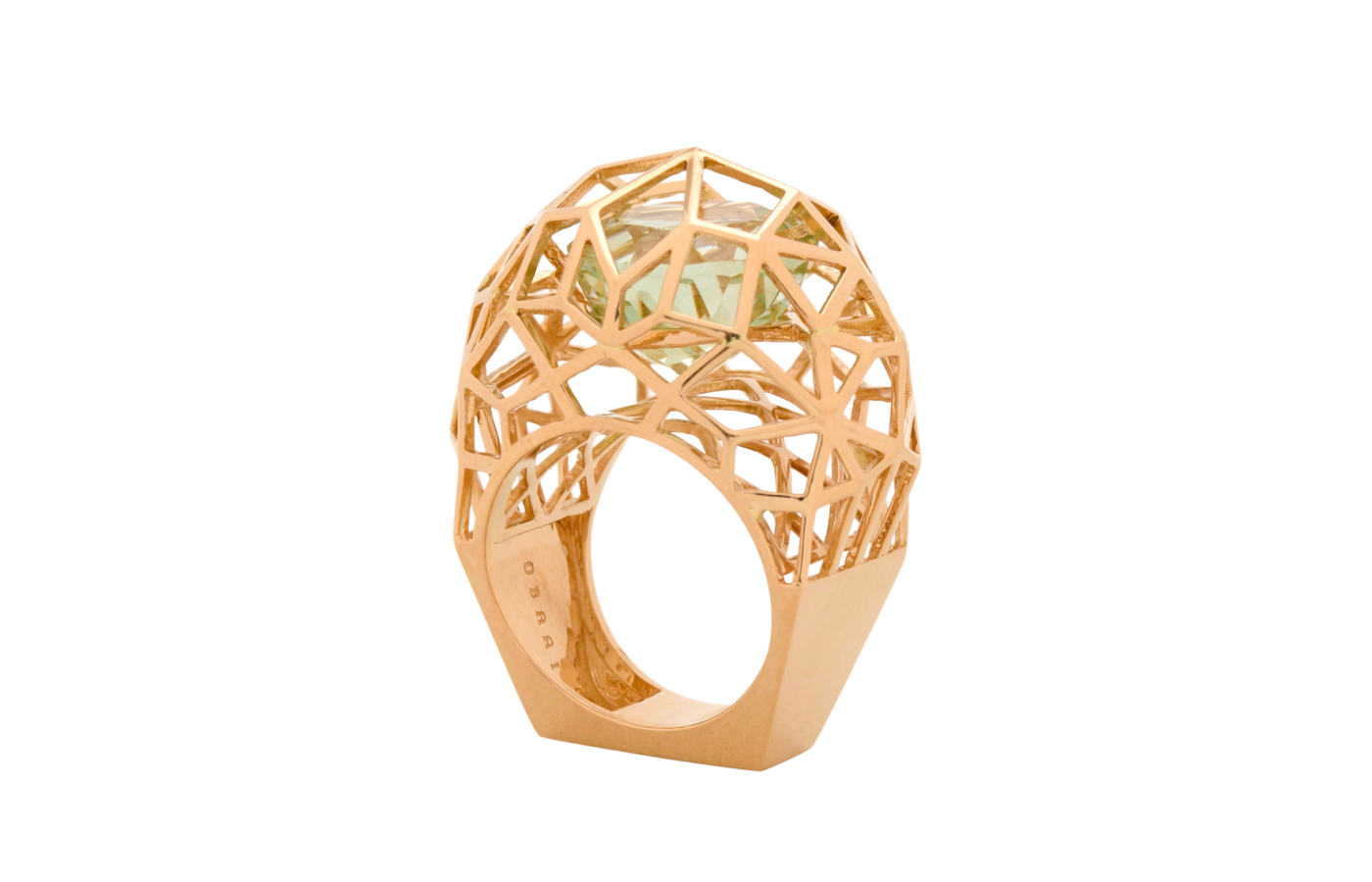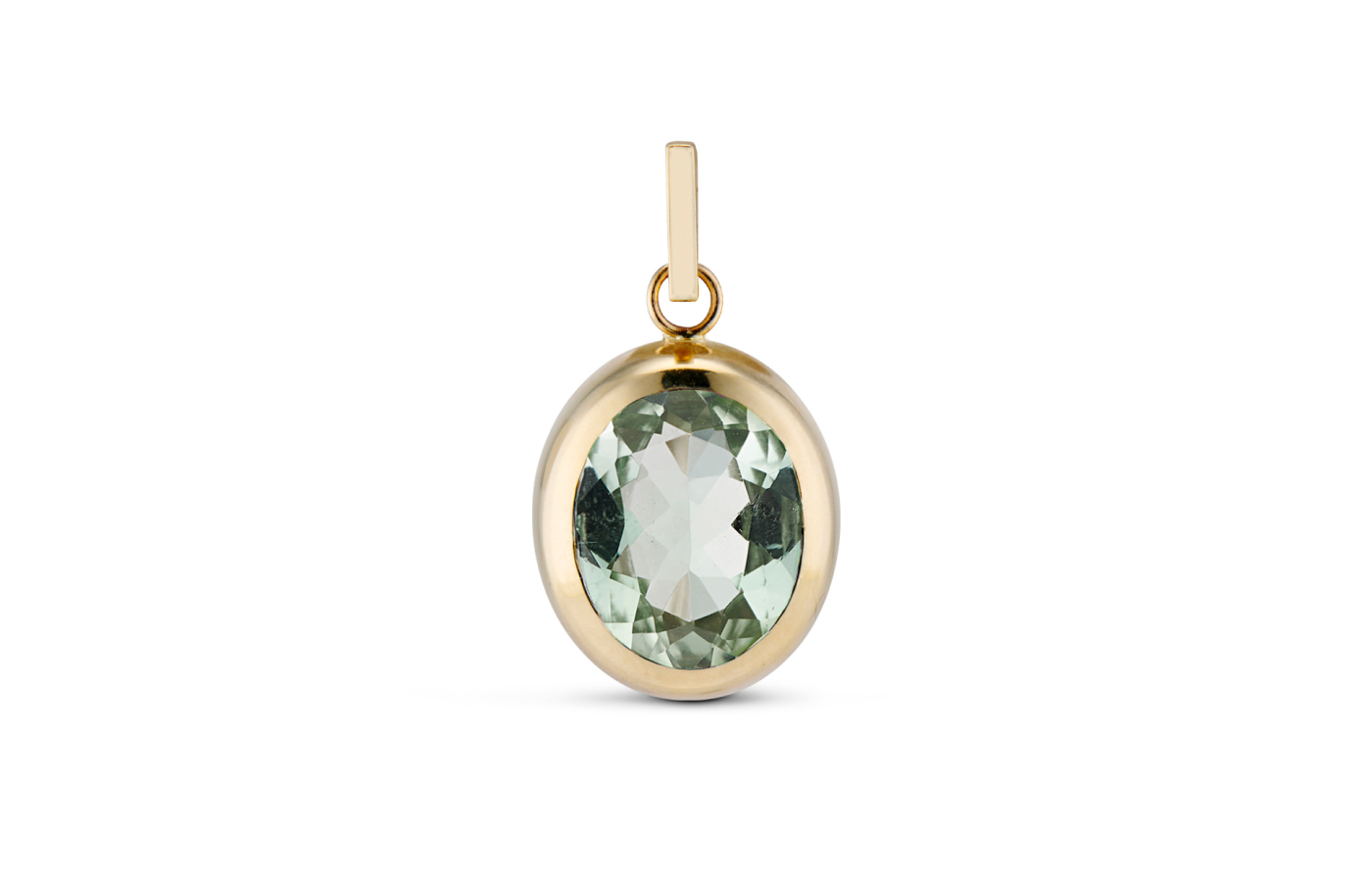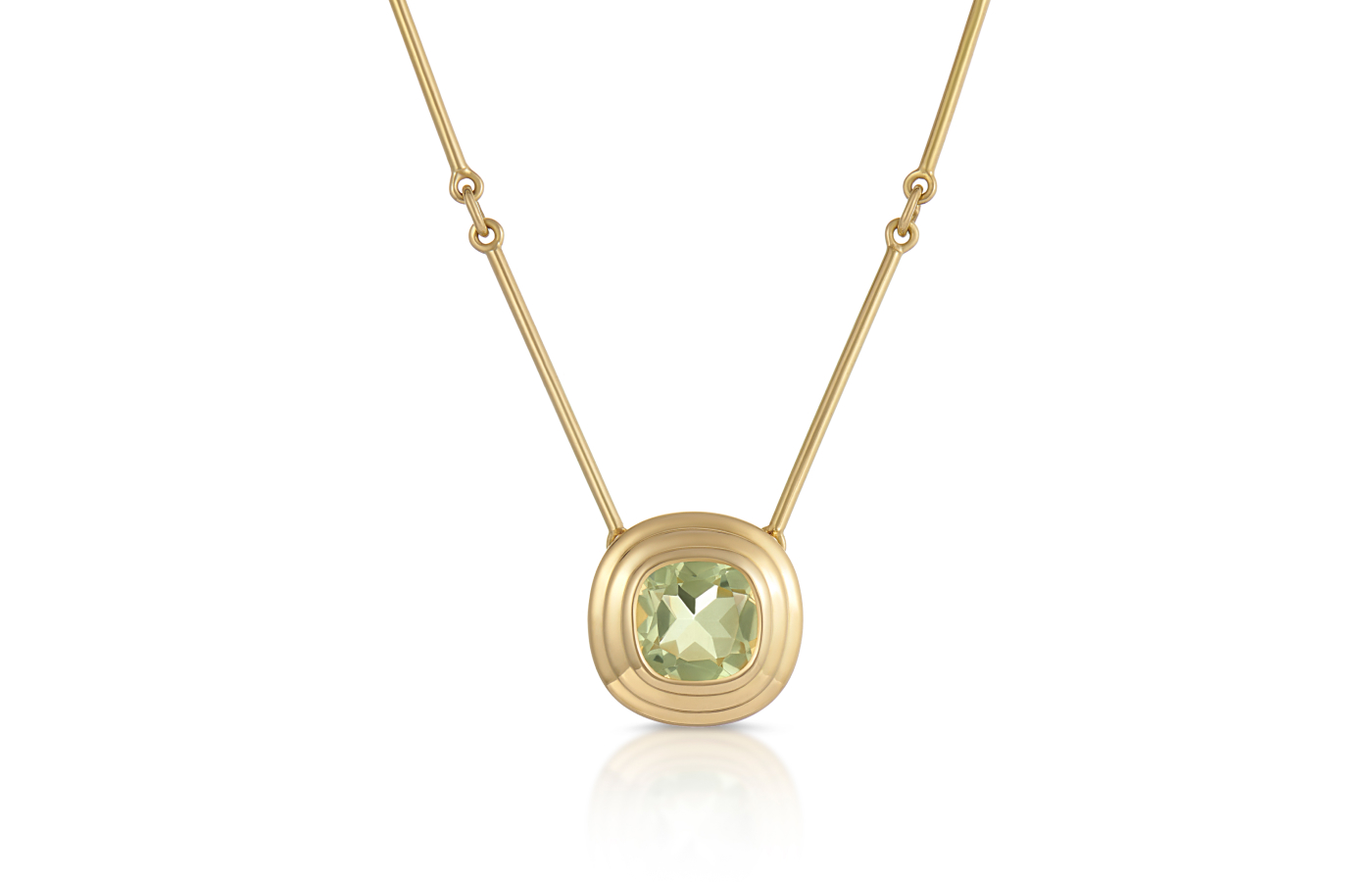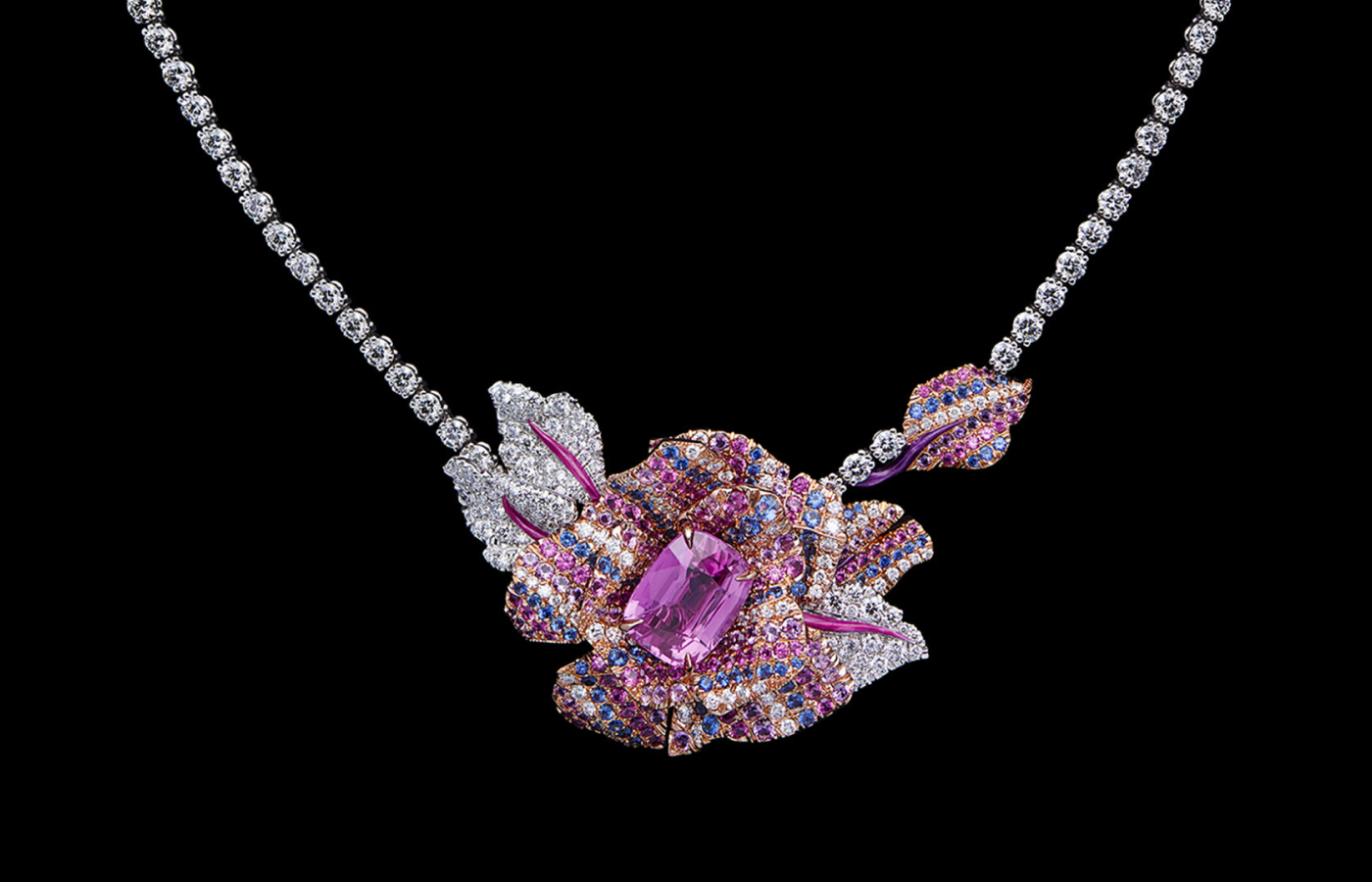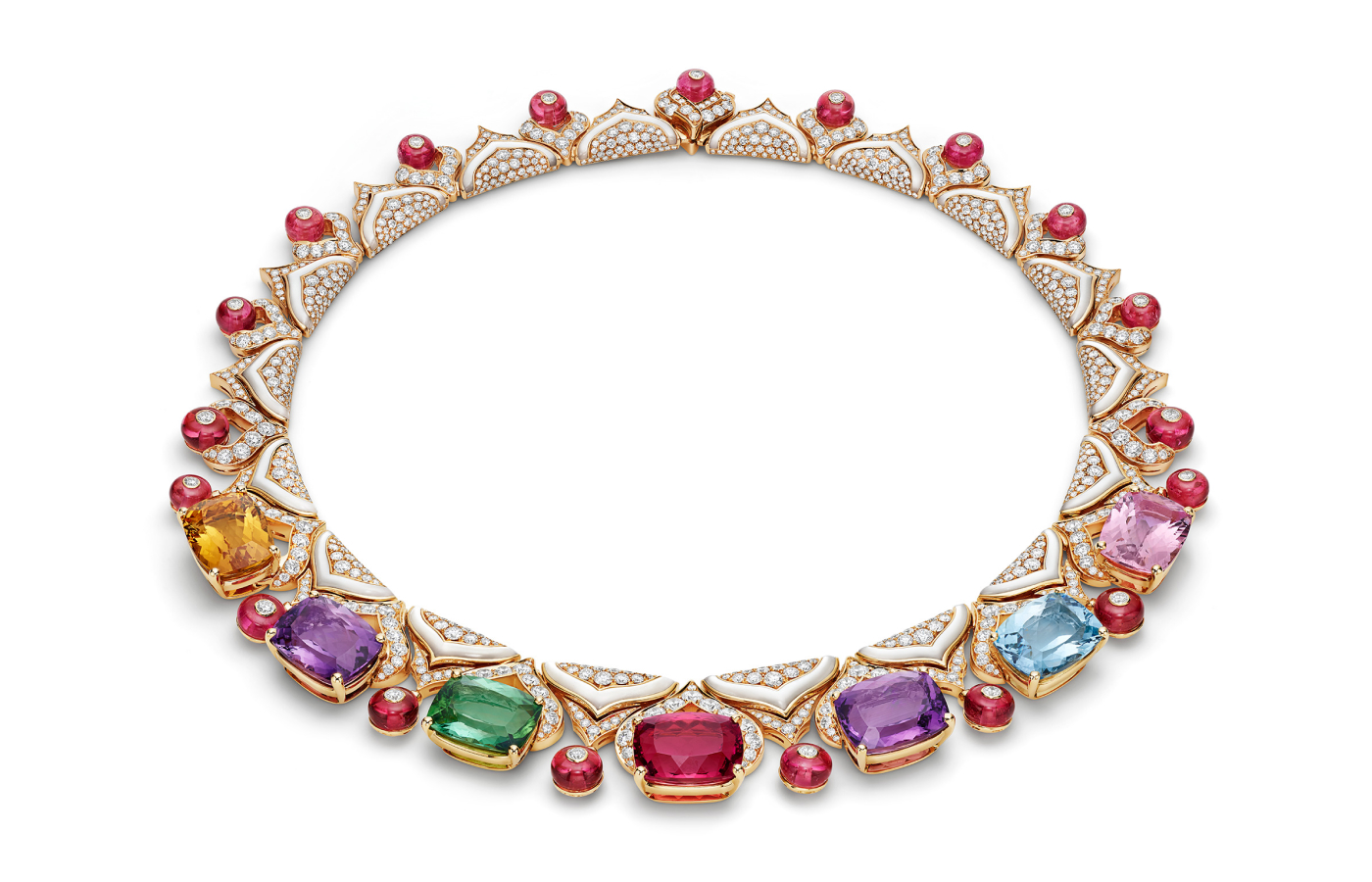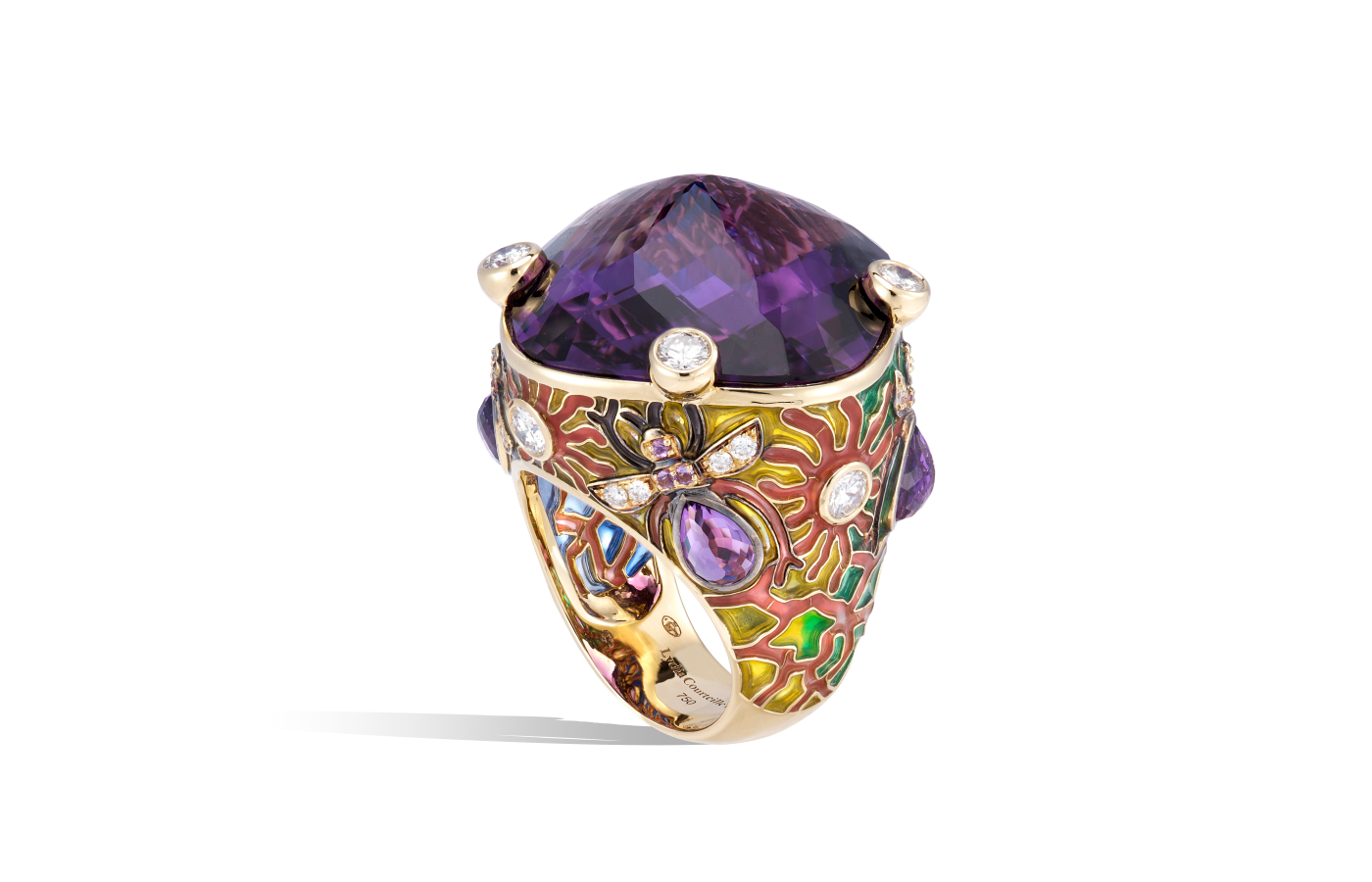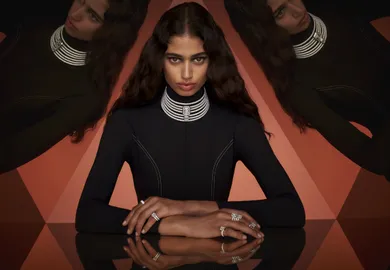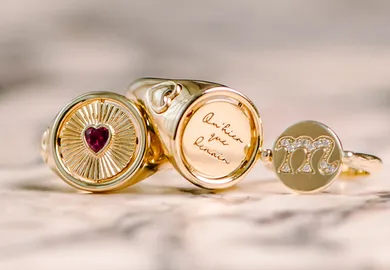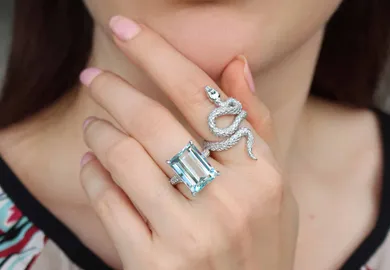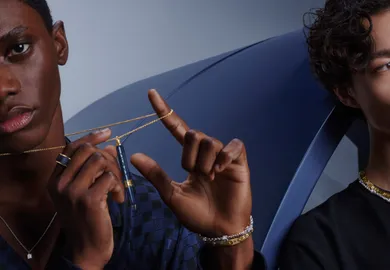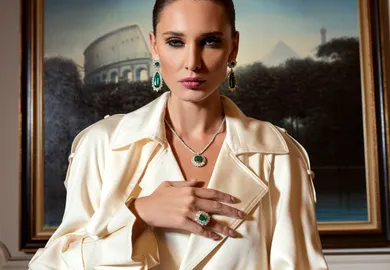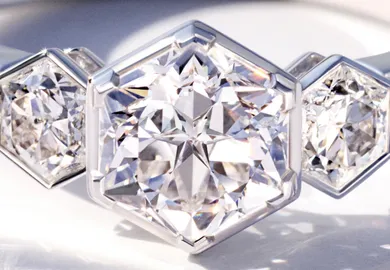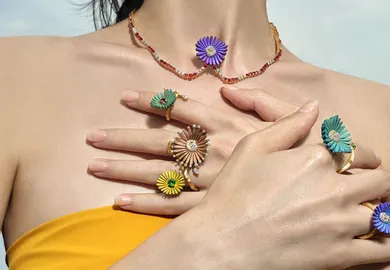
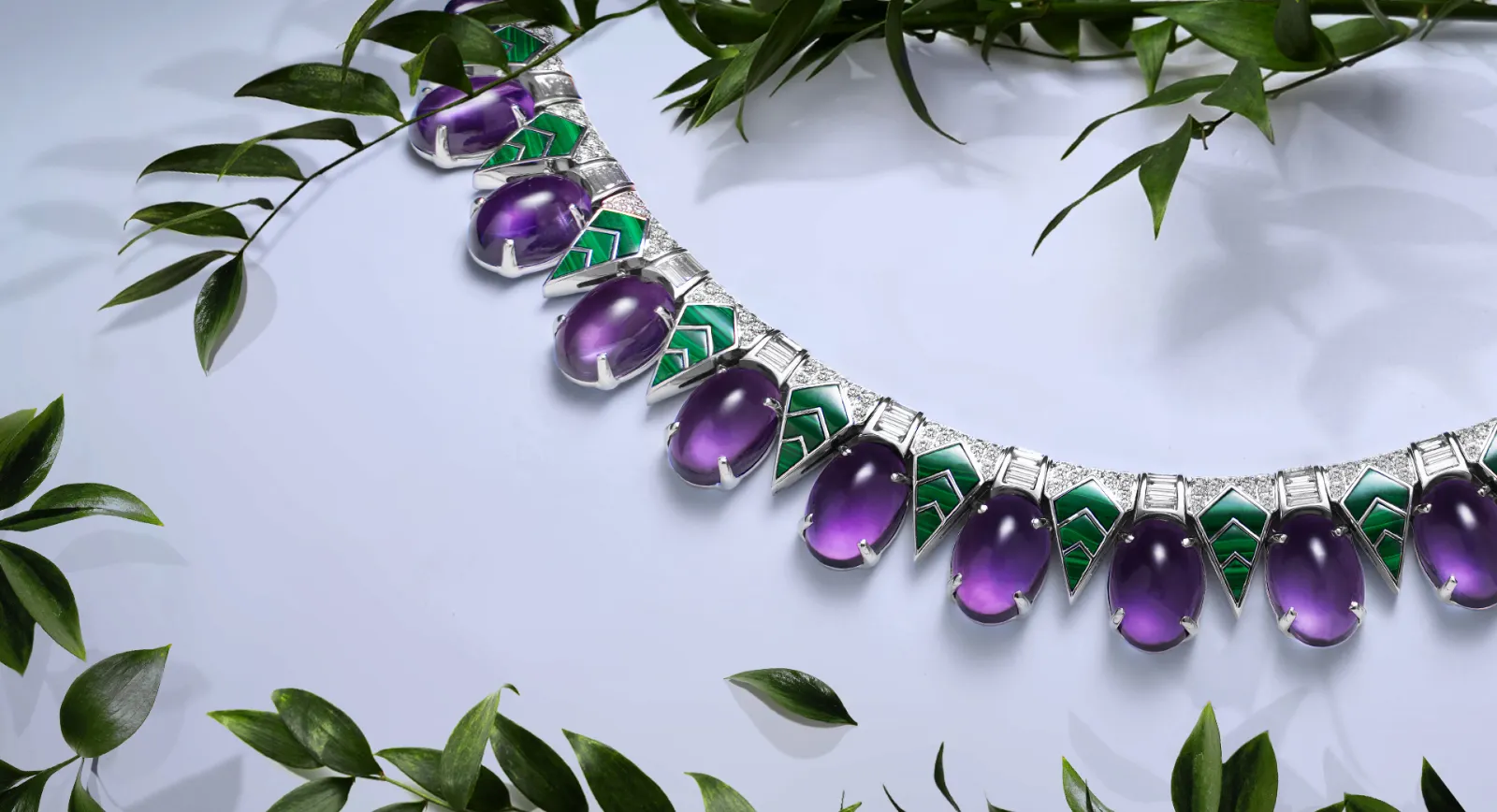
Amazing Amethysts: February’s Versatile Birthstone
With February in full swing, it’s time to praise this month’s birthstone with an ode to amethyst! Abundant, colourful, strong, and sparkling, let’s celebrate this beautiful purple gemstone and the designers who bring out its best attributes.
Purple amethysts are the stone of luck for those born in February, and whilst we’ve already covered their history, lore, and popularity amongst the royal and elite, we haven’t discussed why jewellery designers love working with this beautiful and versatile gem. Let’s examine this velvety reddish-purple precious stone and explore the many reasons why it is the most valued variety of quartz today, in demand by mass-market jewellers and high jewellery houses alike.
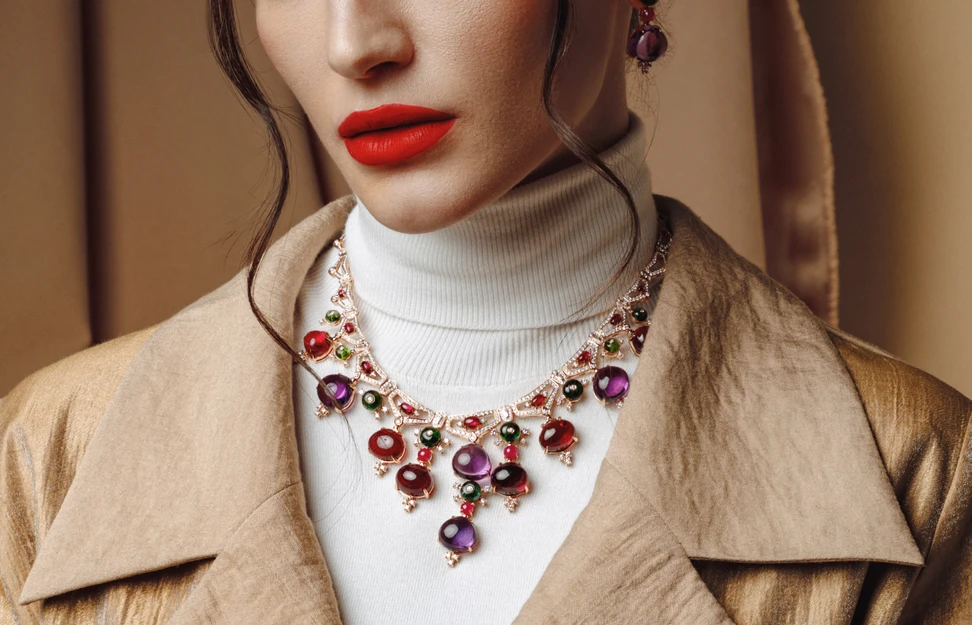
La Marquise Imperia amethysts necklace
One of amethyst’s greatest assets is that it is one of the more commonly found precious gemstones. Quartz is a mineral that is widely available across the Earth’s crust, which means that amethyst deposits are relatively frequent when compared to those of its ‘Cardinal Gem’ counterparts (diamond, emerald, ruby and sapphire), which are found in more restricted geographical locations and conditions. The positive impact of this is twofold – firstly, their availability results in a modest price tag, in which even the larger carat weights are not dramatically costly. In the words of British jeweller Stephen Webster, MBE: “Amethyst has always been a favourite of mine because the gem gives an amazing amount of bang for your buck. A great Bolivian or Brazilian amethyst is rich and luxuriant without the price tag of so many other coloured gems- making it a win-win in my book”.
The second positive result of the earth’s abundance of amethysts is that designers have a much larger source of important carat-weight gems to play with. Because their growth conditions are less harsh than those of a diamond or emerald, jewellery designers can choose large-sized amethysts to feature in their jewellery pieces. Luxury jewellery brands such as Boodles and Chaumet create attention-grabbing cocktail rings with this stone, whilst the House of Taffin has created a choker featuring a single 143.22-carat amethyst. In recent years, the famous American brand Tiffany & Co. revived its iconic Bird on a Rock motif through a series of one-of-a-kind necklaces, one of which features a 15.95-carat cushion-cut amethyst.
Another coveted quality of the amethyst is its hardness. On the Mohs scale, which measures the scratch resistance of minerals, amethyst ranks a 7 out of 10, making it an extremely durable gem to wear and work with. A score of 7 qualifies amethysts to be worn daily, meaning it’s suitable for all forms of jewellery, including rings, bracelets and other pieces that are often at risk of touching other materials that might cause abrasion of softer stones. Jewellery designers across all price ranges appreciate the sinuous balance of elegance and durability that the amethyst offers, allowing them to create boldly colourful pieces that will not only enchant the wearer but also those who inherit the pieces – amethyst jewels will last many lifetimes.
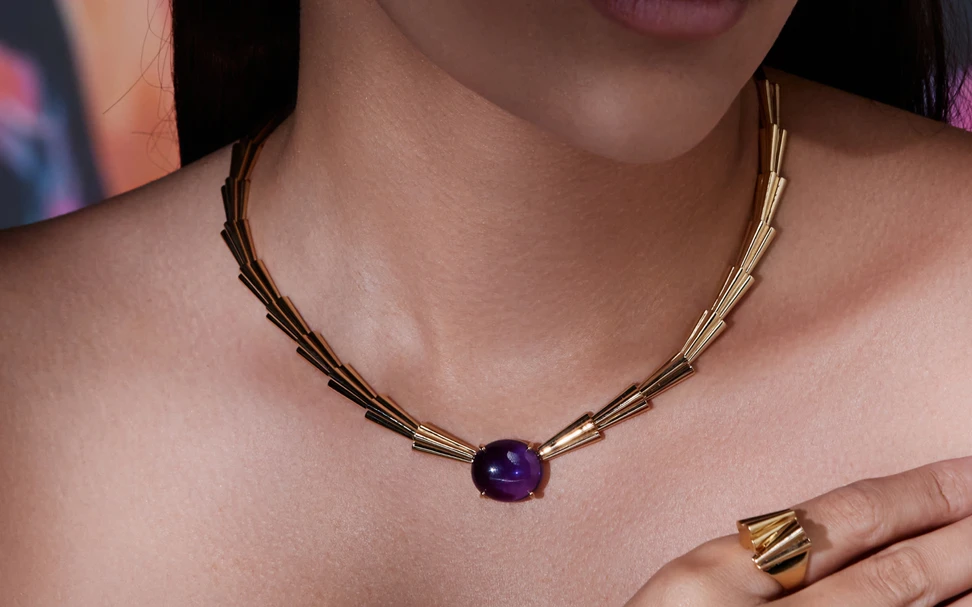
TOKTAM Rumi Ametysts Necklace
Its abundance and strength combined are the reason for yet another coveted characteristic of this violet gem – because amethyst crystals often form in large and well-defined structures, gem cutters and lapidaries are freer to experiment with cuts and shapes. From druzy and crystal pendants to cabochon cocktail rings and beaded bracelets, stone workers are free to choose to cut the gem in a manner that will best accentuate the individual colour of each amethyst. Also, the flexibility of its crystal structure makes it a great gem for fancy cuts, where precious stones are formed into shapes that are well outside the box of traditional cuts to fit specific jewels or visions, including carving the surface of the gem with floral patterns or using the ancient art of glyptic to shape the gem into specific figures. These qualities make amethysts the perfect playground for jewellery designers.
Finally, another perk to working with amethysts is its alternative soft green colourway. Green amethyst, also known as prasiolite, receives its pastel green hue through the presence of iron compounds. This gem only occurs naturally on very rare occasions, so much of the green amethysts you see on the market today has undergone heat treatment or irradiation to achieve that verdant colour. Its delicate green tone is unique, making it a popular choice when looking to create a piece of jewellery.
Plentiful, hard, and colourful, the design possibilities with this stone seem endless, which is perhaps why, in recent years, there has been an increase in the presence of amethysts in high jewellery collections. The Parisian house of Dior included amethysts in its Dior Print high jewellery collection, as did Bulgari in its Colour Treasures collection that celebrated cabochon gems in high jewellery. Most recently, gem collector and antique aficionado Lydia Courteille included a single 26.87-carat amethyst as the focal point of a Mexican-art-inspired cocktail ring.
It is for all these reasons that the amethyst is a favoured gem of jewellery designers. Do you have an amethyst piece on your jewellery wish list for February? Let us know which one!
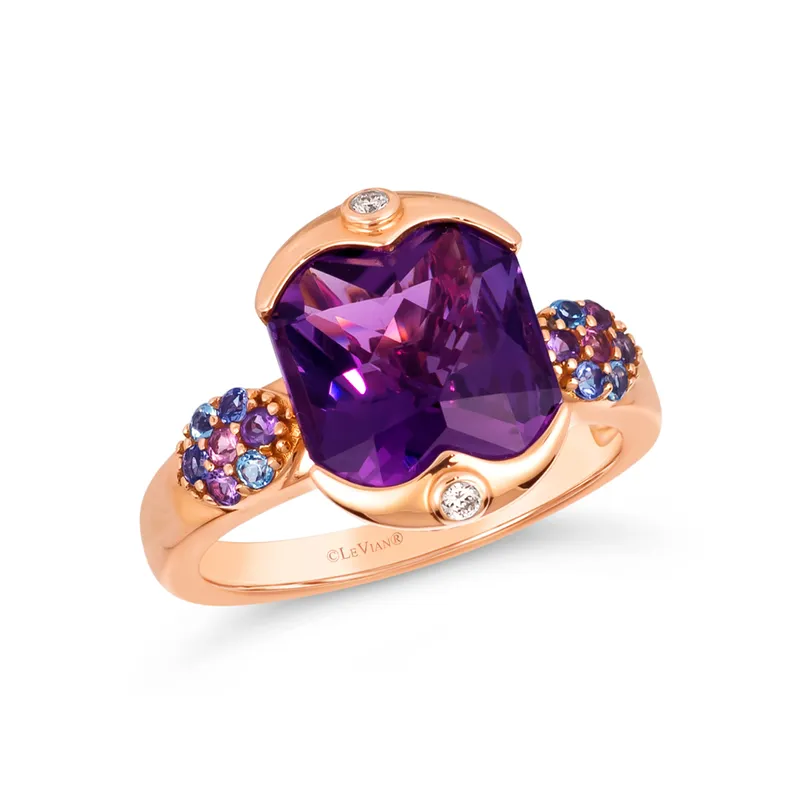
Le Vian
Le Vian
Venetian Windows ring in rose gold, amethyst, tanzanite and tourmaline
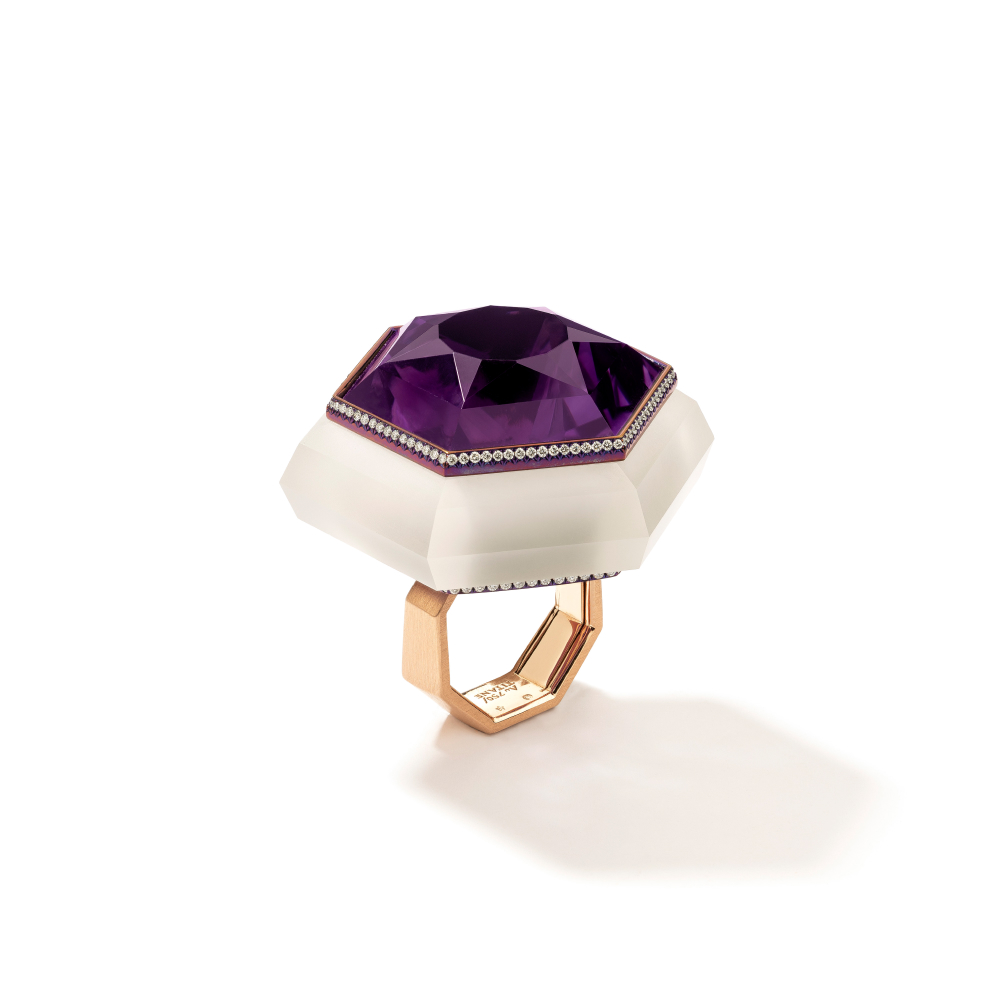
Glenn Spiro
Glenn Spiro
Ring in red gold, titanium, featuring a 65.94-ct amethyst, sapphire and diamond
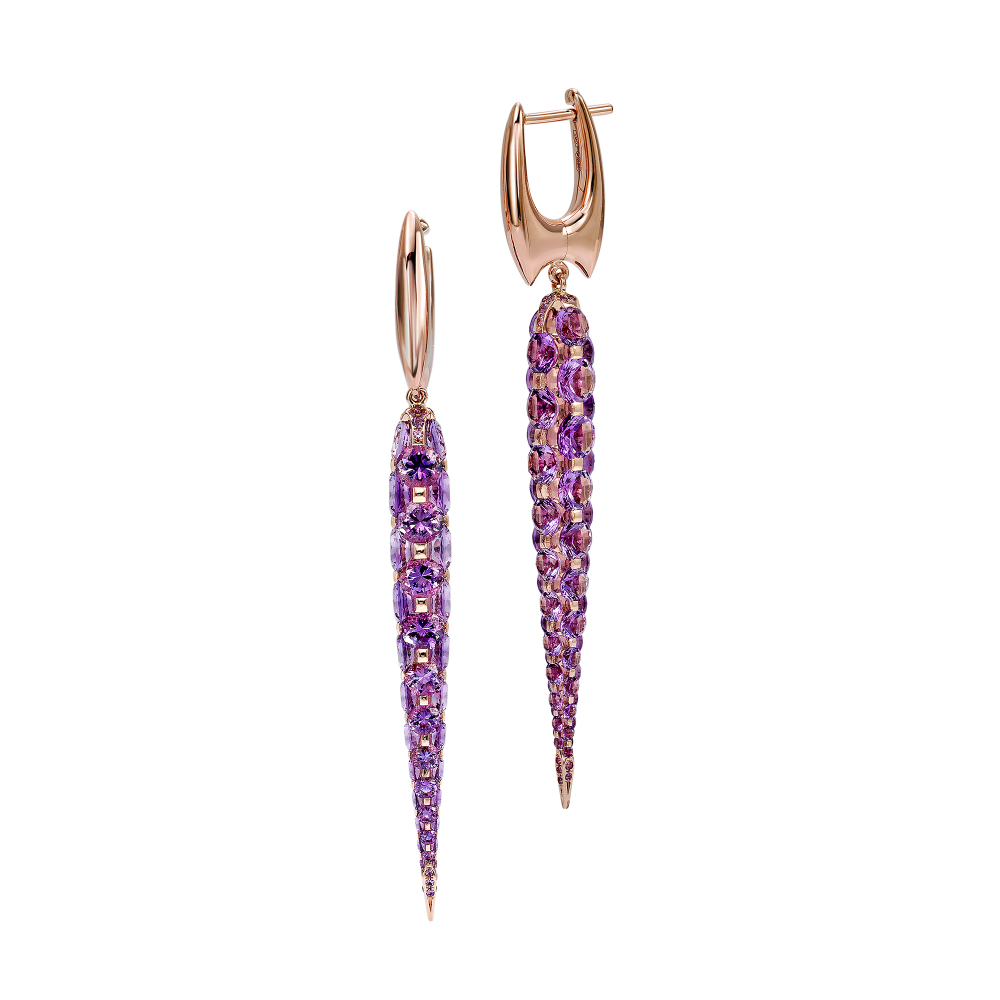
Boghossian
Boghossian
Merveilles Icicle earrings in rose gold and amethyst
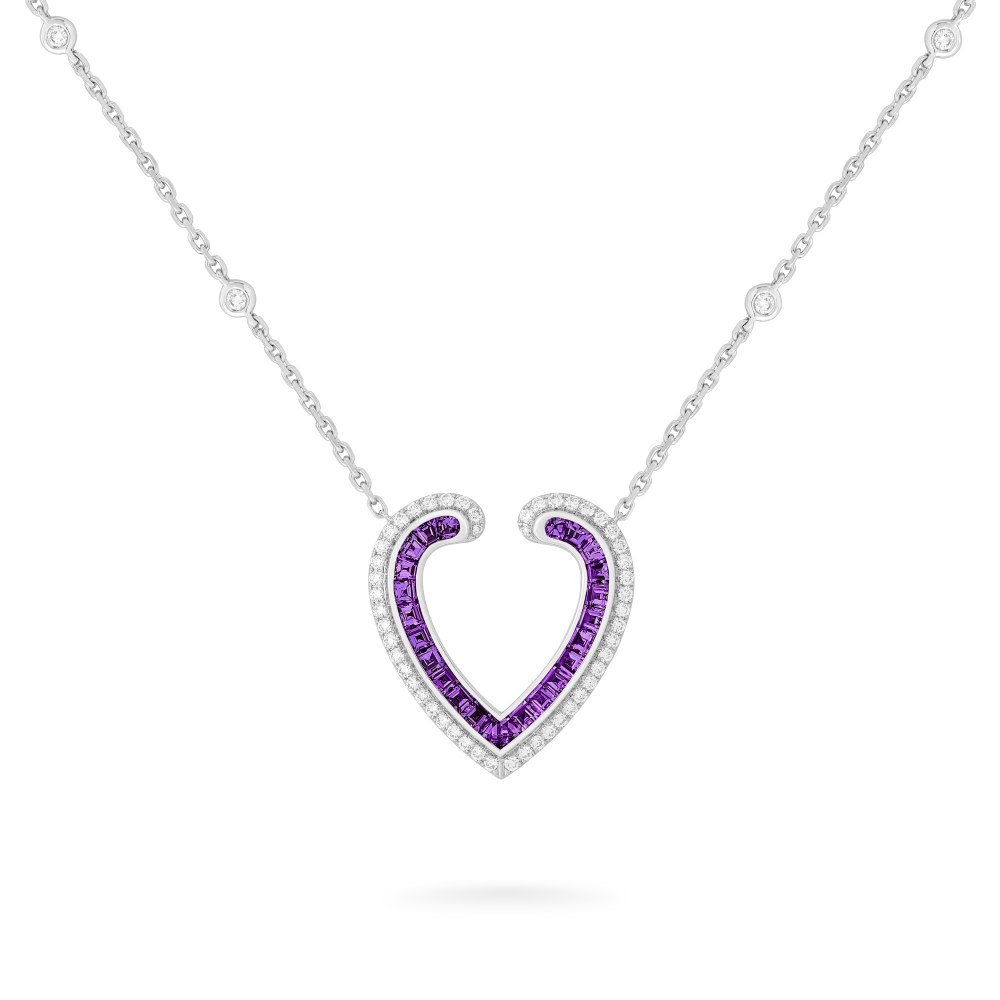
Garrard
Garrard
Aloria pendant white gold, amethyst and diamond
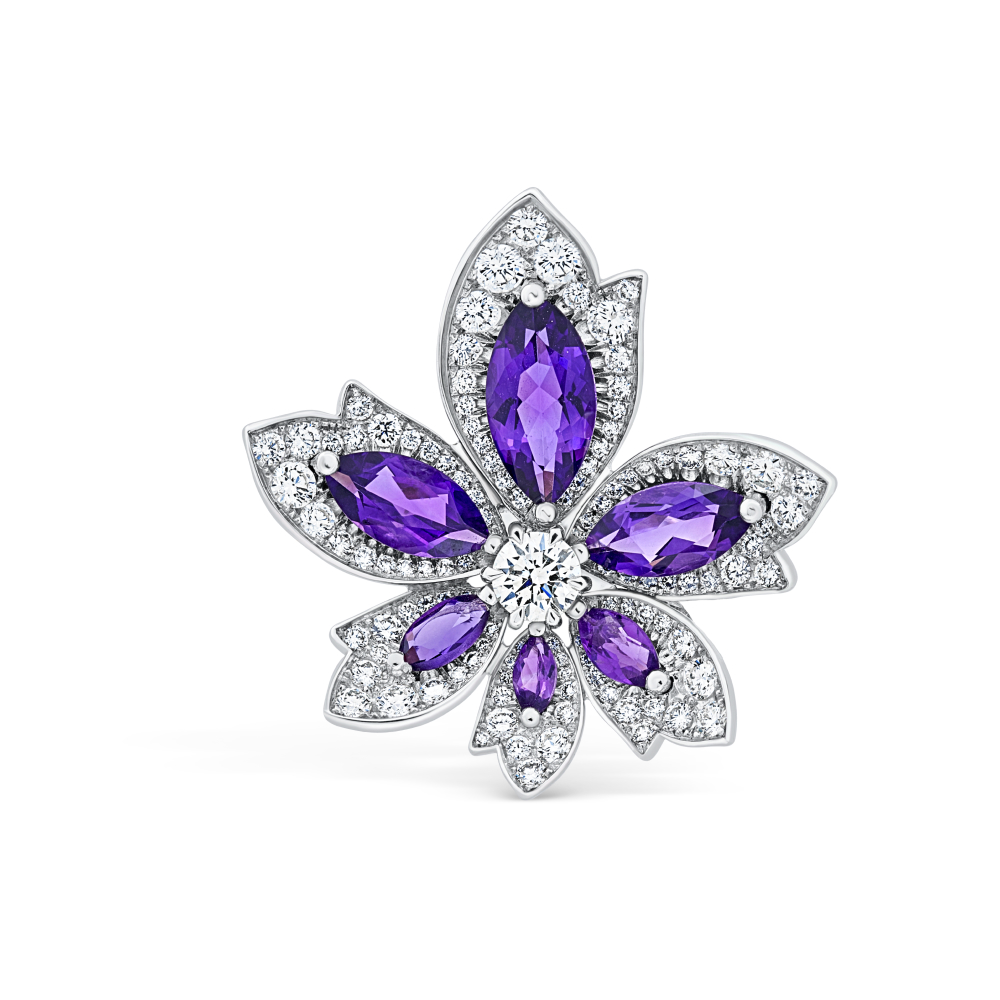
David Morris
David Morris
Palm ring in white gold, amethyst and diamond
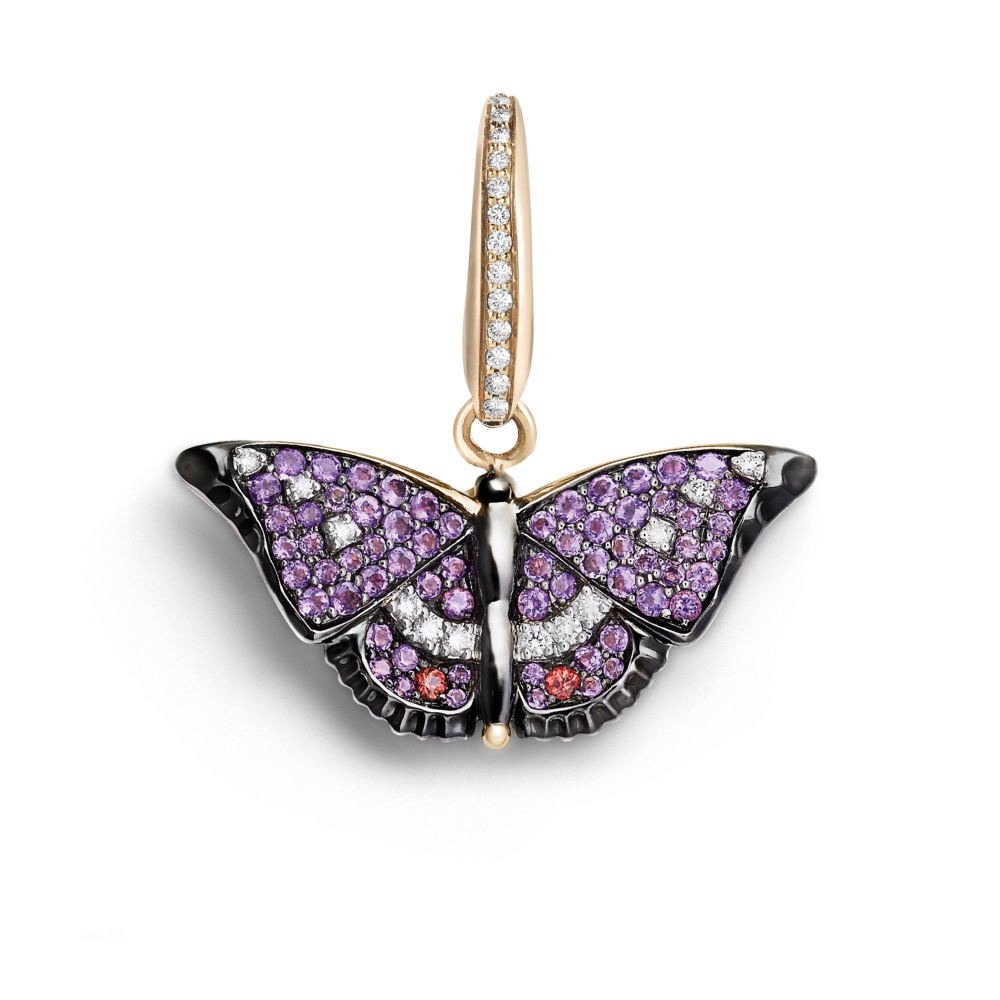
Asprey
Asprey
Woodland Butterfly charm in gold, enamel, amethyst, sapphire and diamond
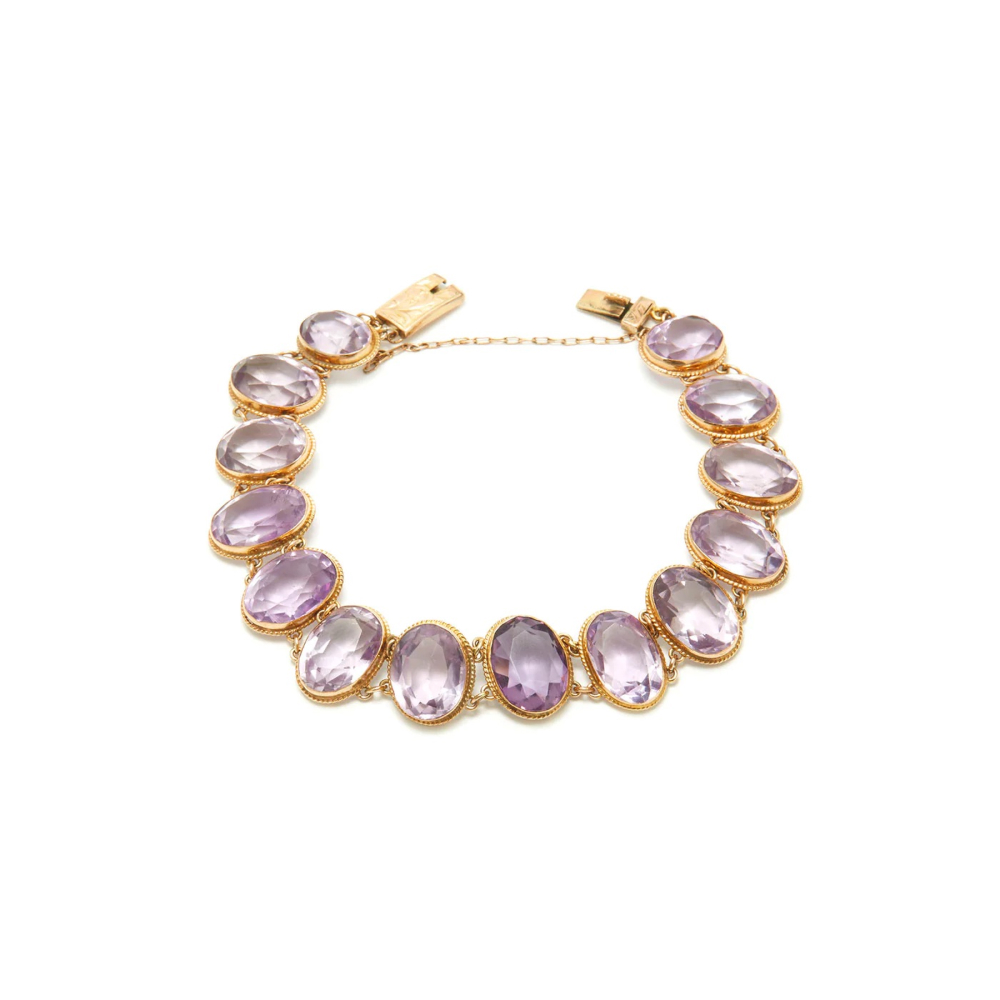
Ashley Zhang
Ashley Zhang
Bracelet in gold and amethyst
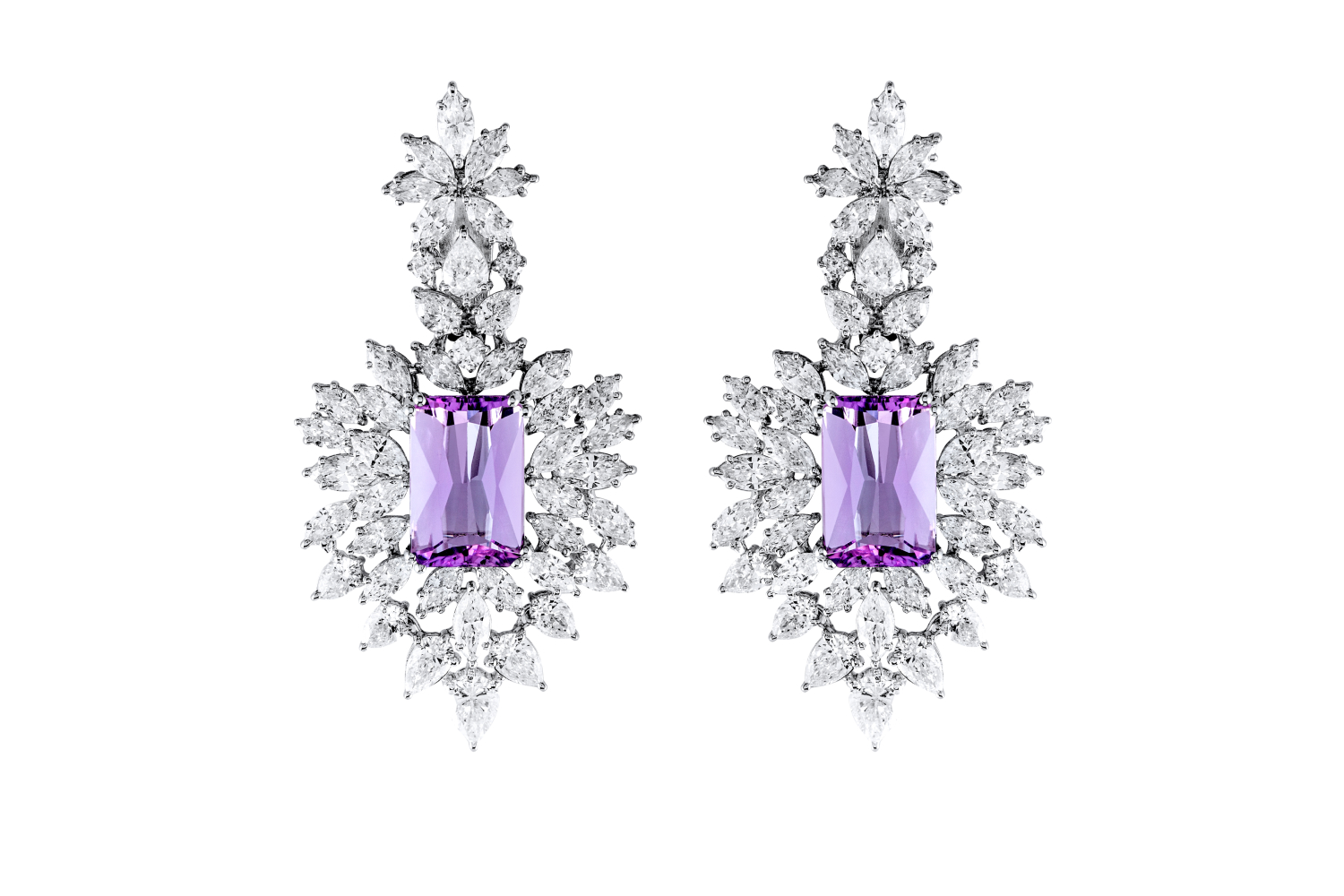
Amwaj
Amwaj
Earrings in white gold, amethyst and diamond earrings
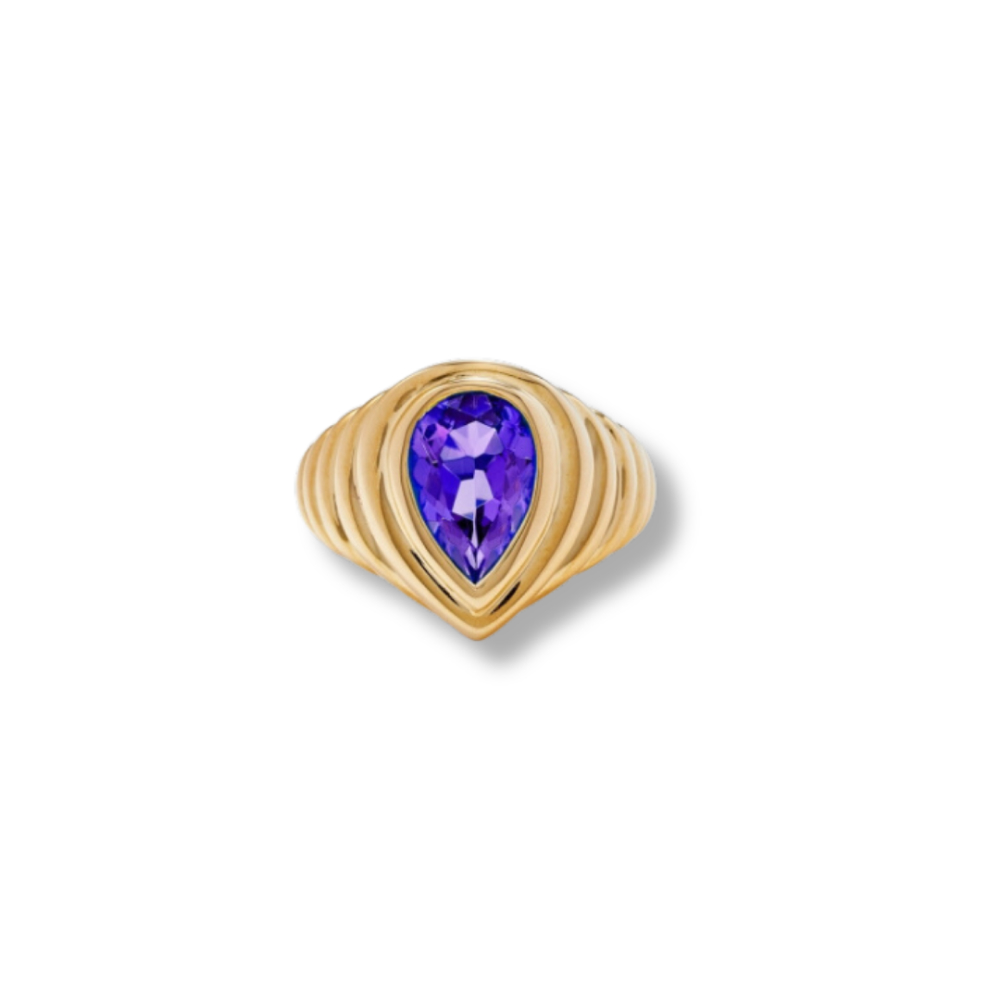
Yvonne Léon
Yvonne Léon
Berlingot ring in gold and amethyst
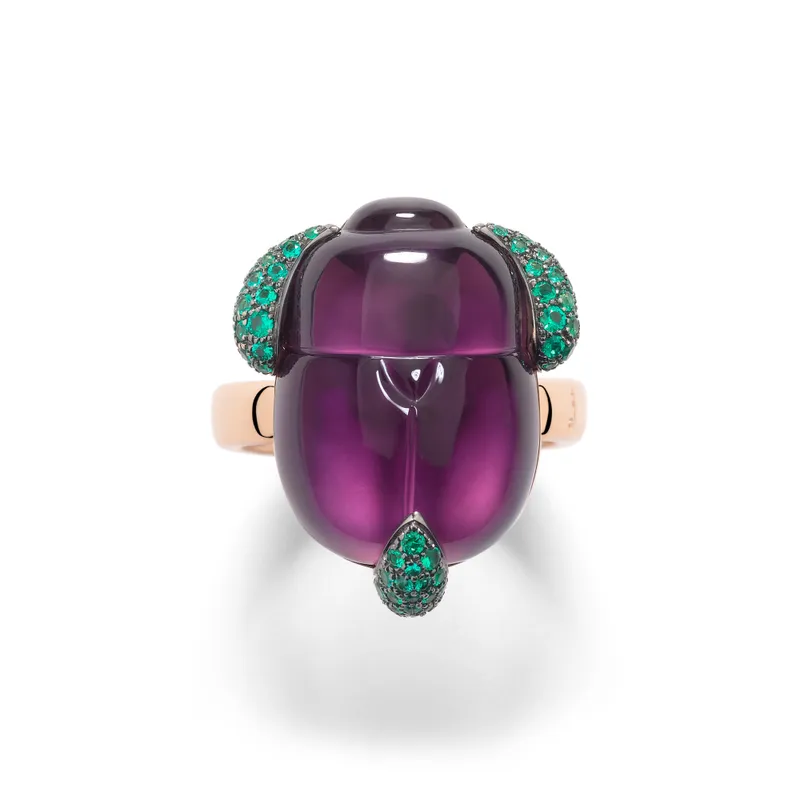
Pomellato
Pomellato
Scarabeo di Pomellato ring in rose gold, carved amethyst and emerald
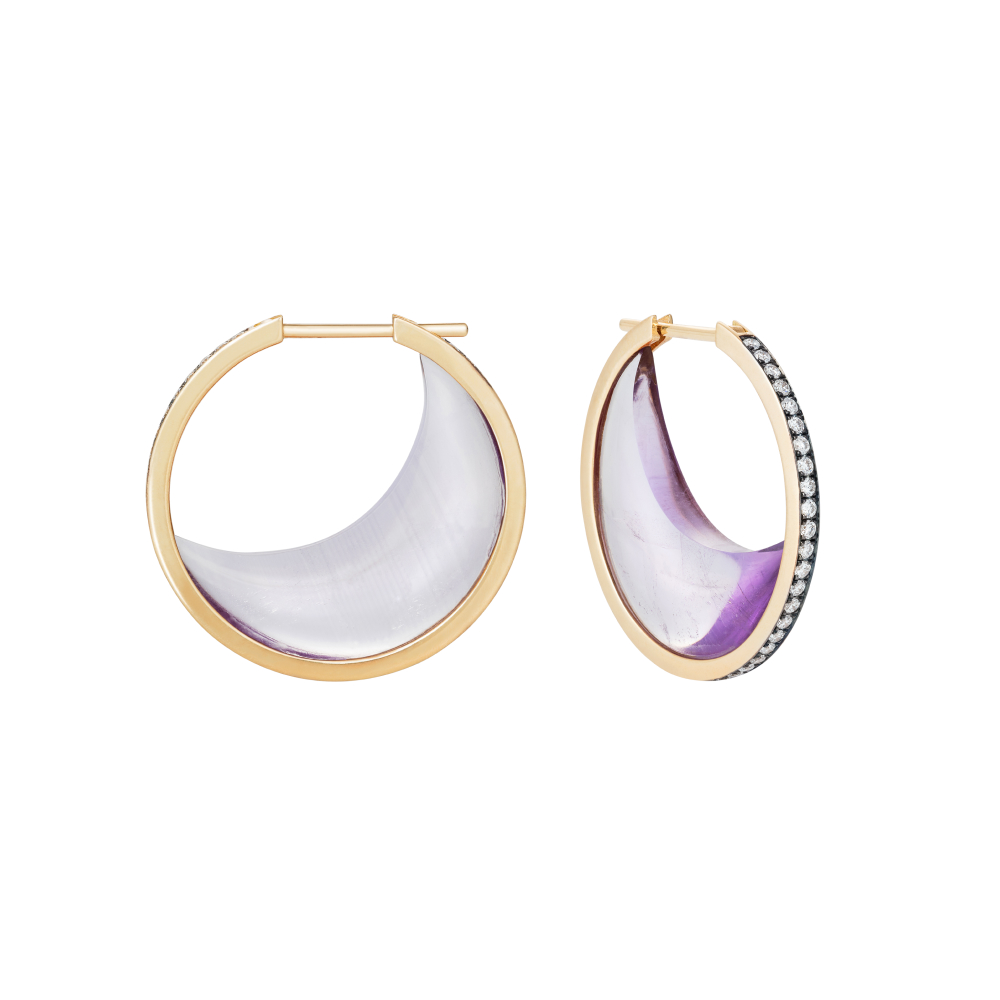
Noor Fares
Noor Fares
Navratna Chandra crescent earrings in gold, amethyst, moonstone and diamond
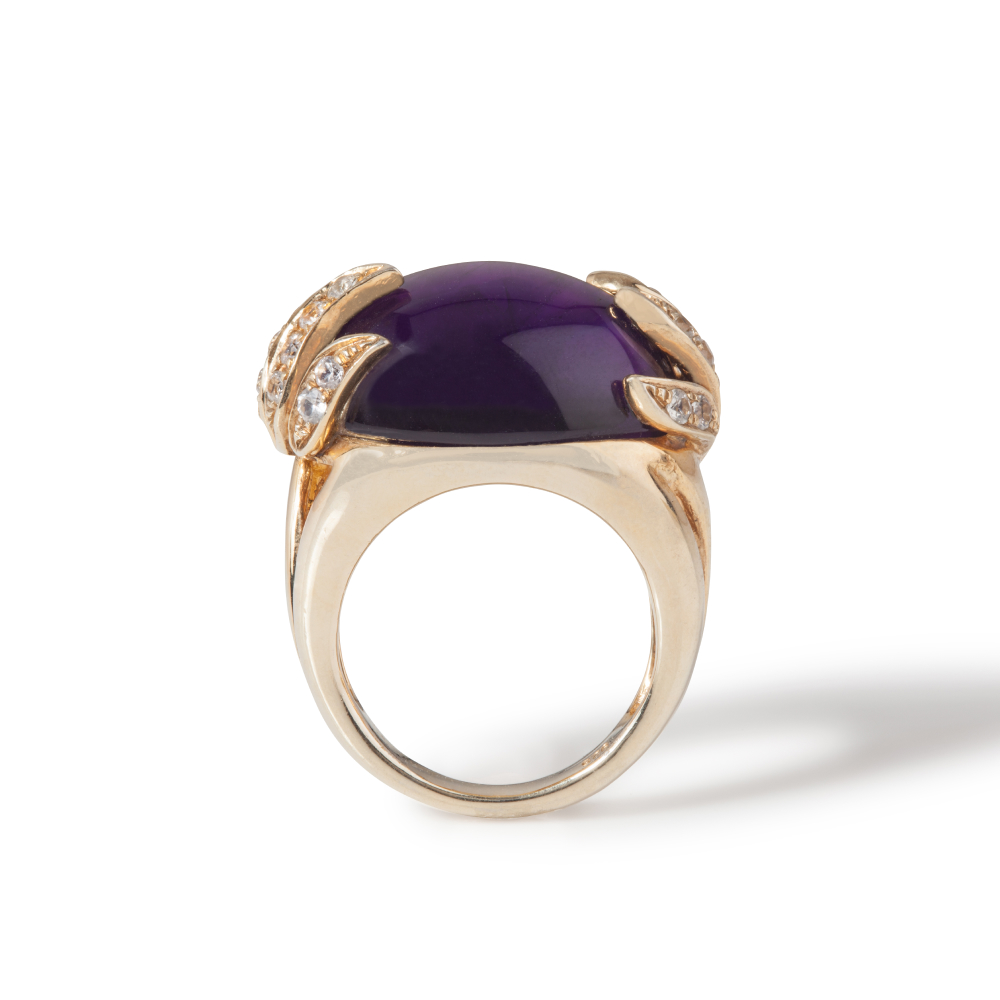
Mara Hotung
Mara Hotung
Aqua ring in gold, amethyst and diamond
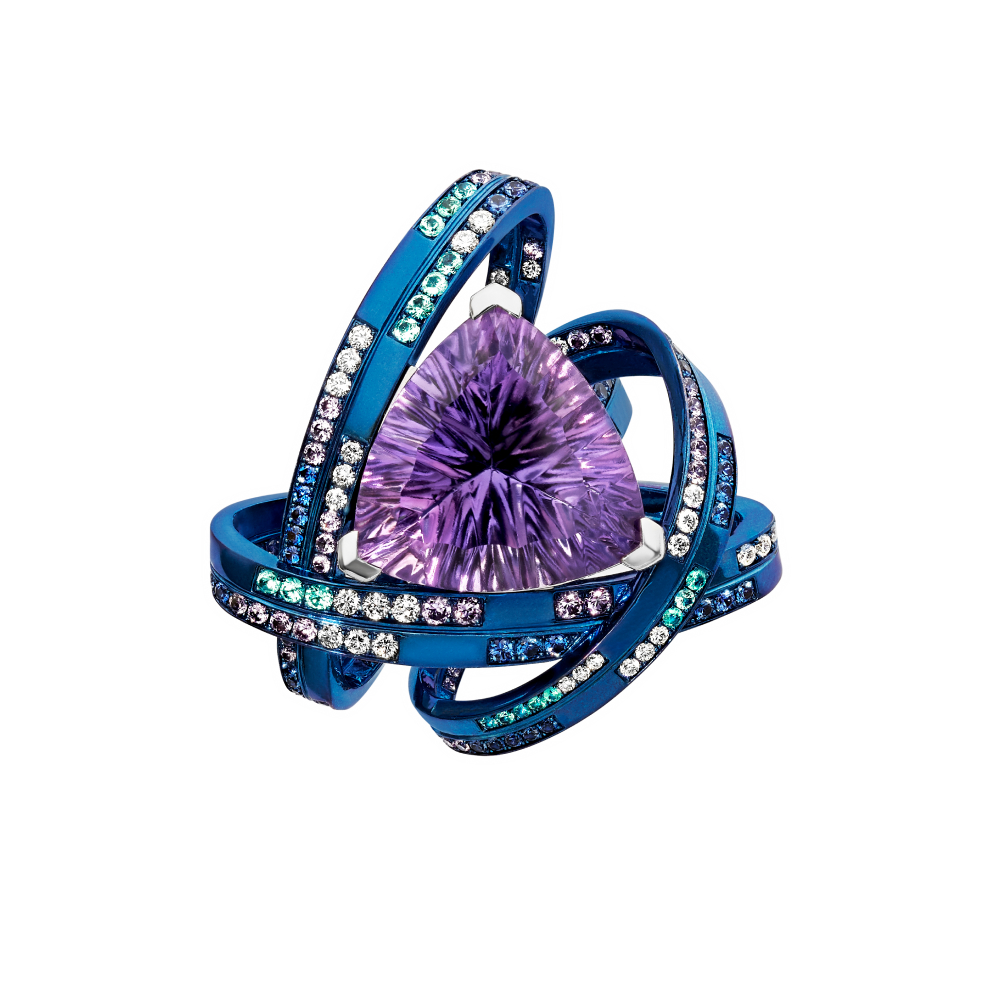
Stephen Webster
Stephen Webster
Rocket Girl ring in white gold, titanium, amethyst, sapphire and tourmaline
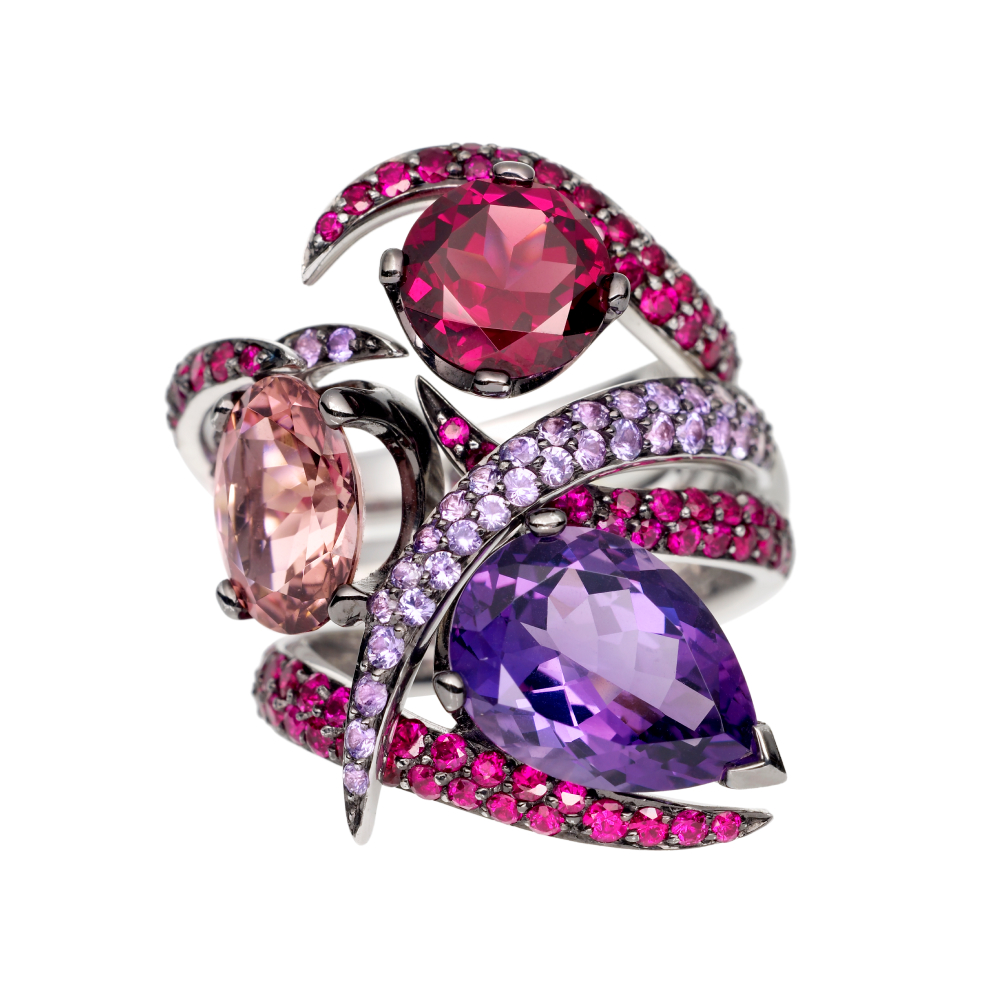
Shaun Leane
Shaun Leane
Interlocking Aurora ring in white gold, amethyst, tourmaline and rhodalite
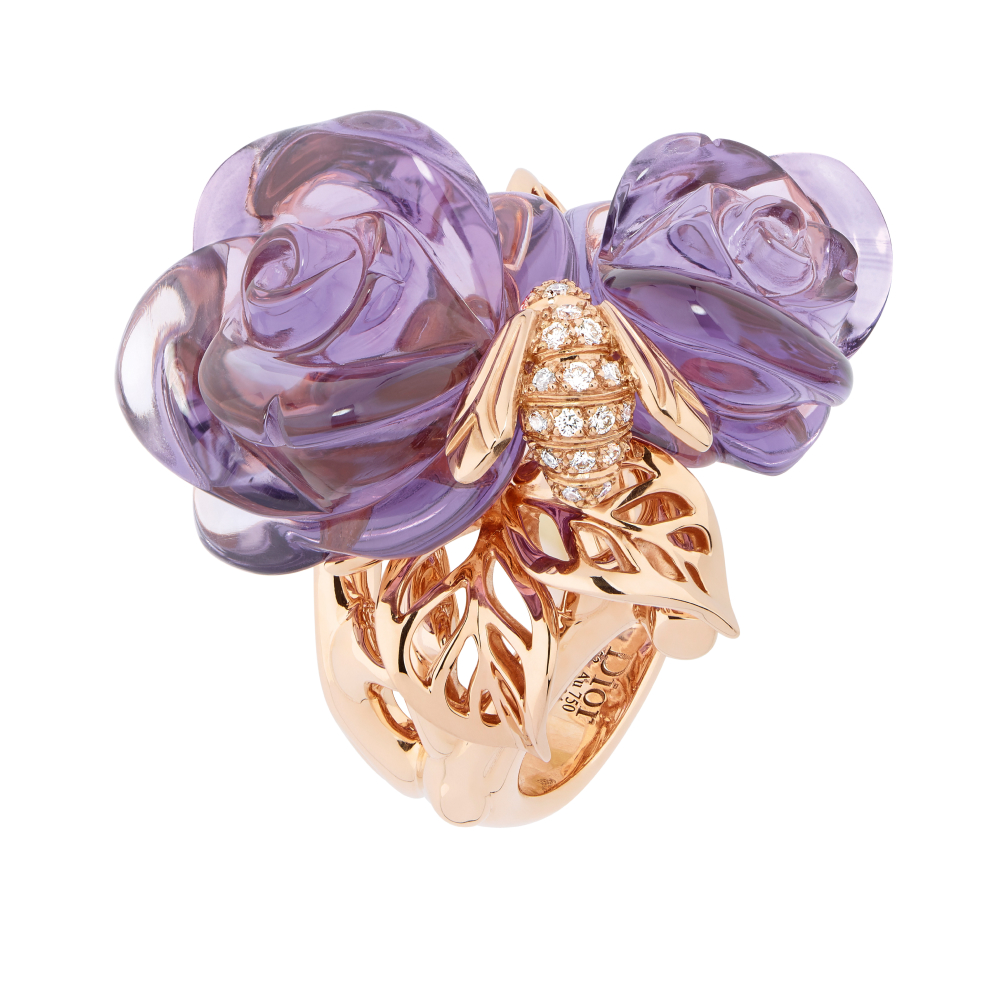
Dior
Dior
Ring in gold, carved amethyst and diamond
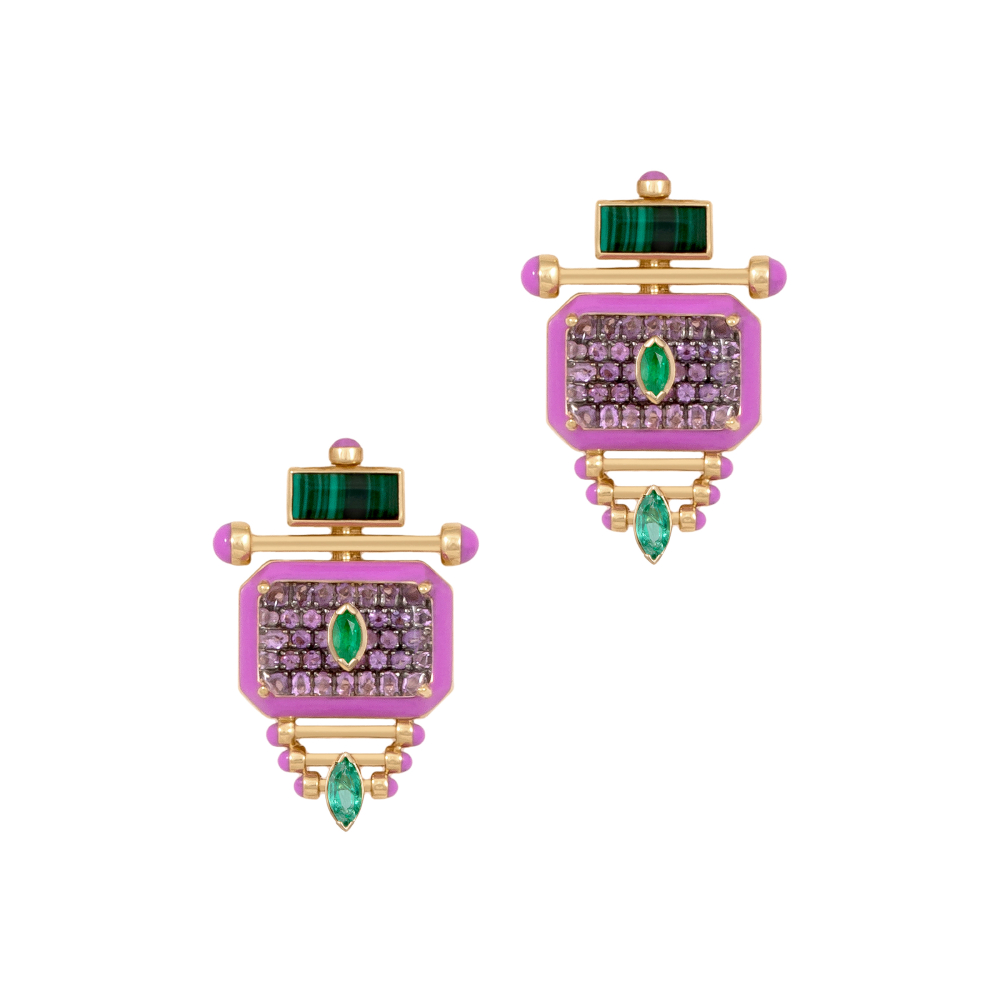
L'Atelier Nawbar
L'Atelier Nawbar
Earrings in gold, enamel, amethyst, emerald and malachite
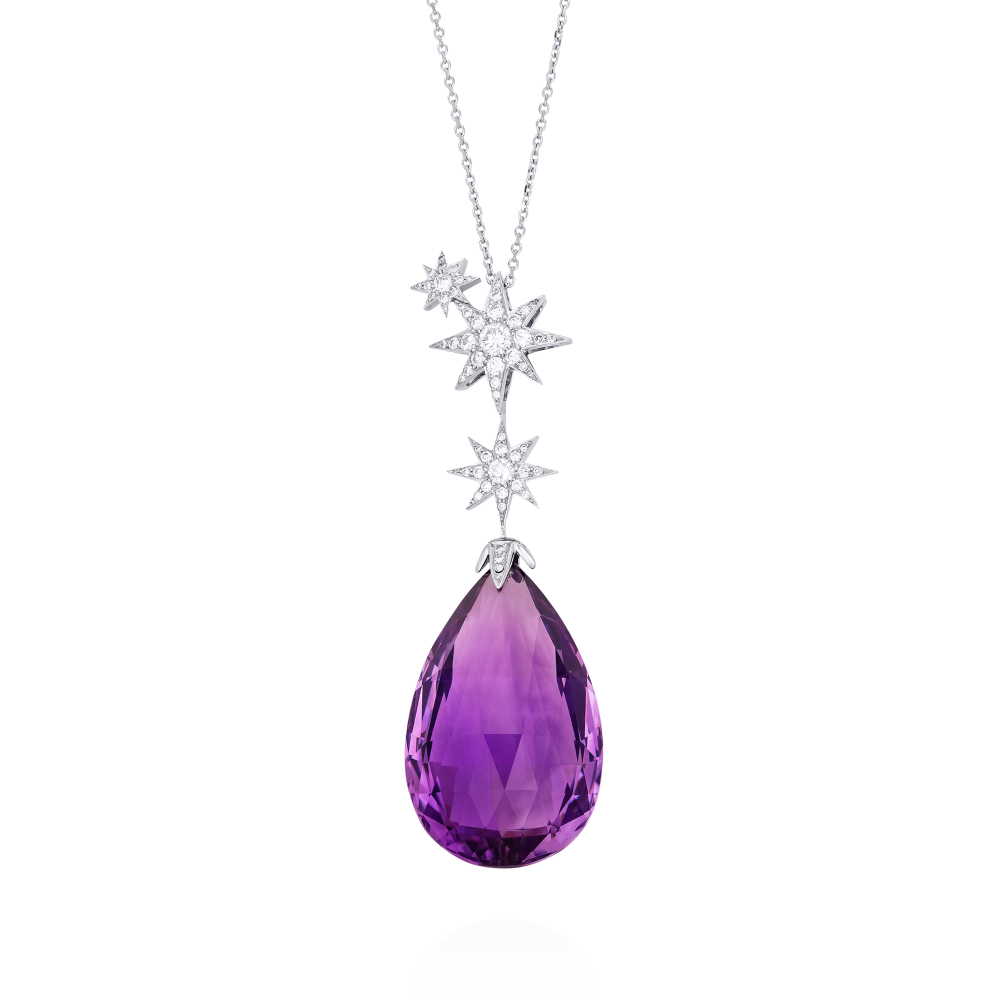
Boodles
Boodles
Necklace in white gold, amethyst and diamond
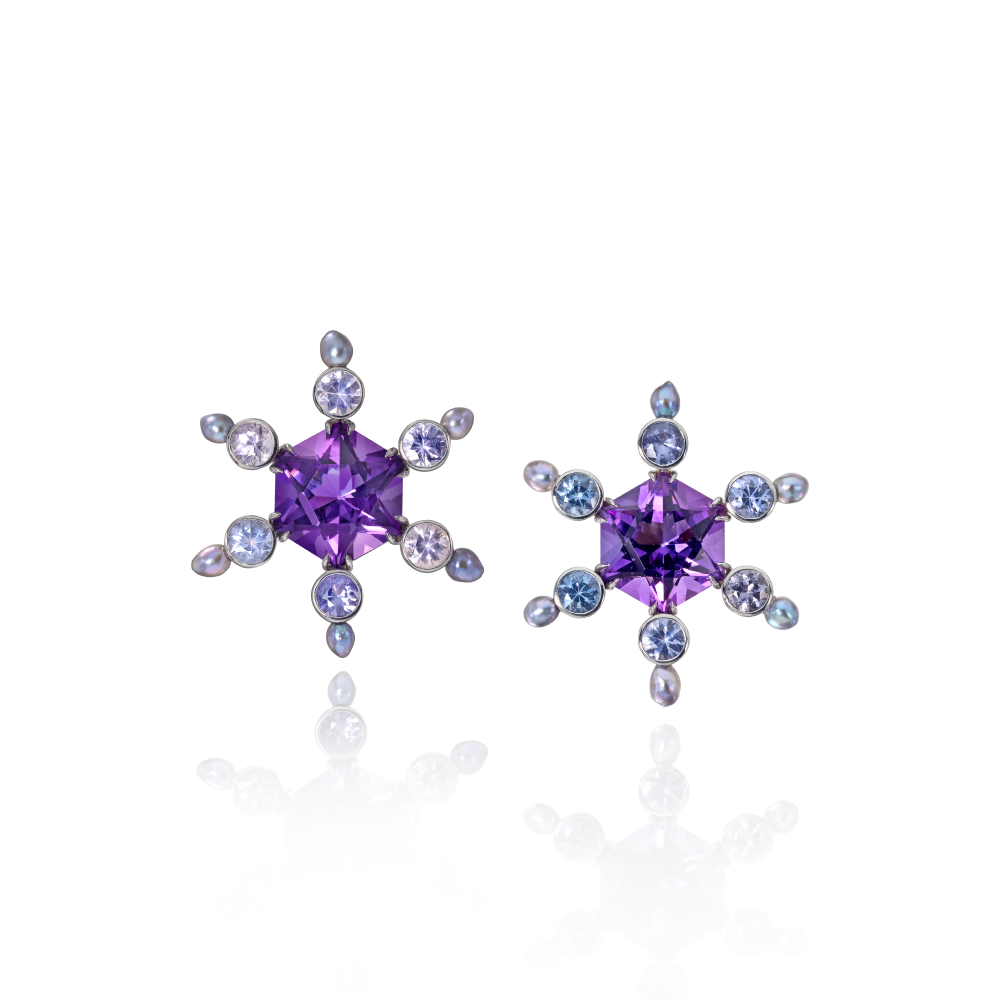
Assael
Assael
Purple Reign earrings in white gold, amethyst, spinel and pearl
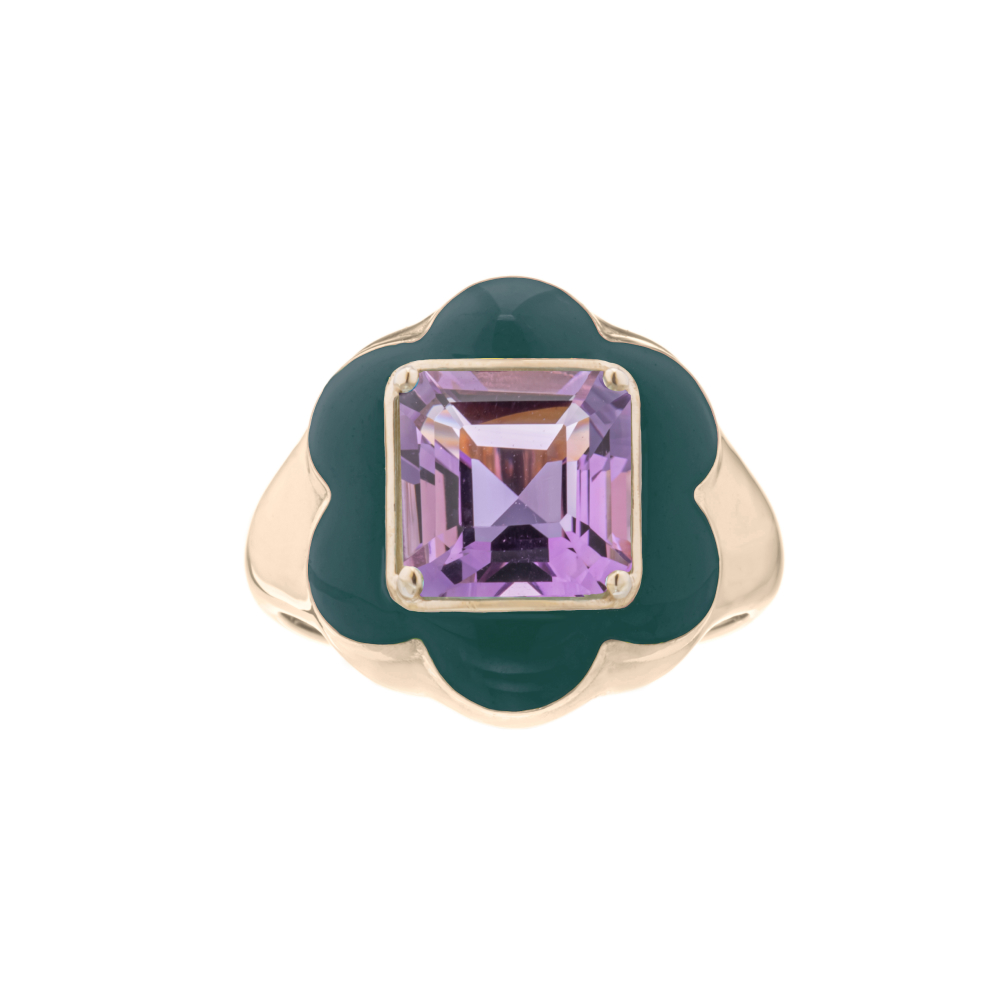
Bea Bongiasca
Bea Bongiasca
Give Them Flowers ring in gold, enamel and amethyst

WORDS
Livia Primo Lack , a Watches and Jewelry journalist and content creator, has covered all aspects of luxury jewels and timepieces. With a strong background in the editorial world, she has developed a keen eye for emerging designers as well as for groundbreaking innovations from iconic brands
